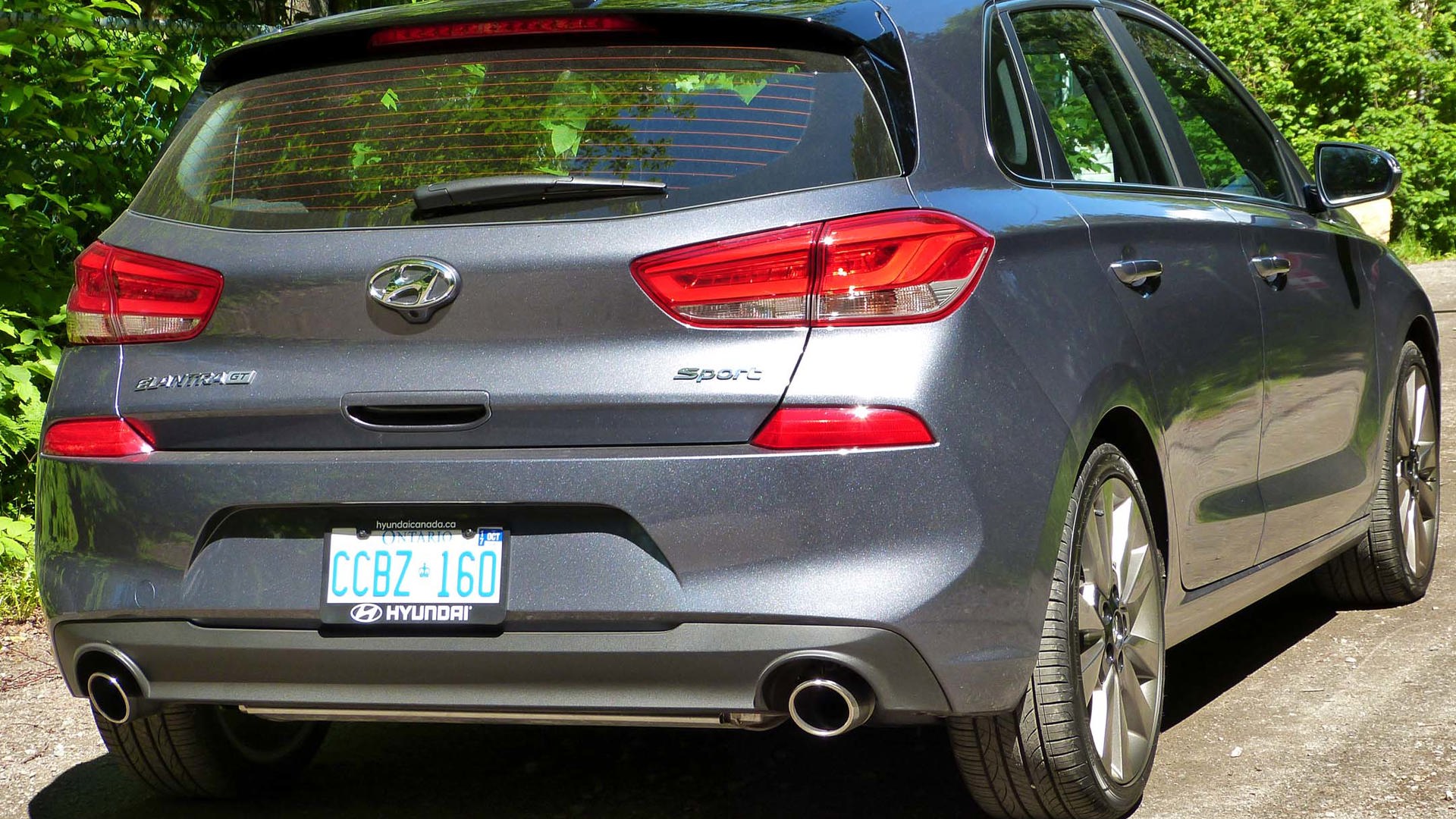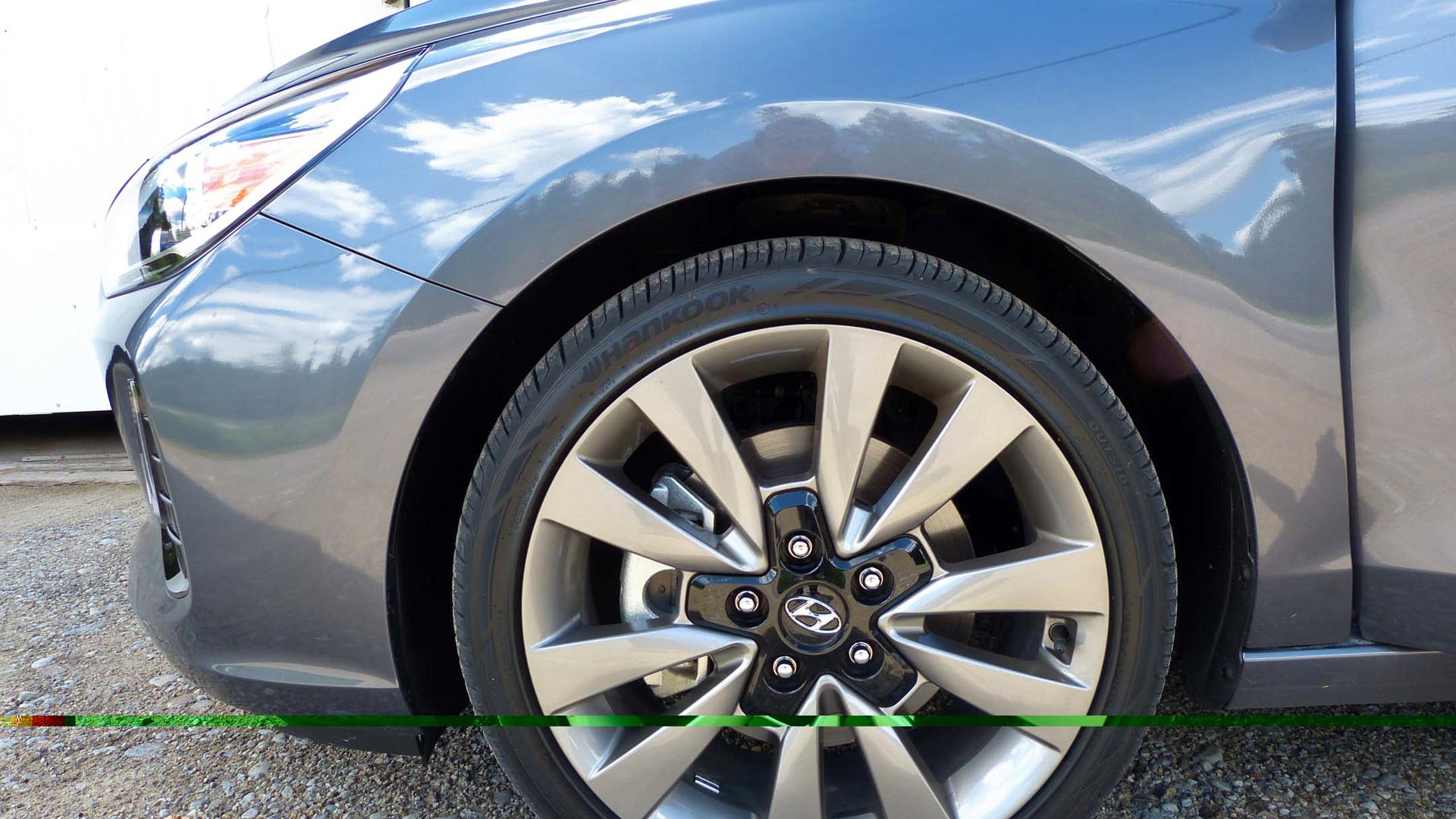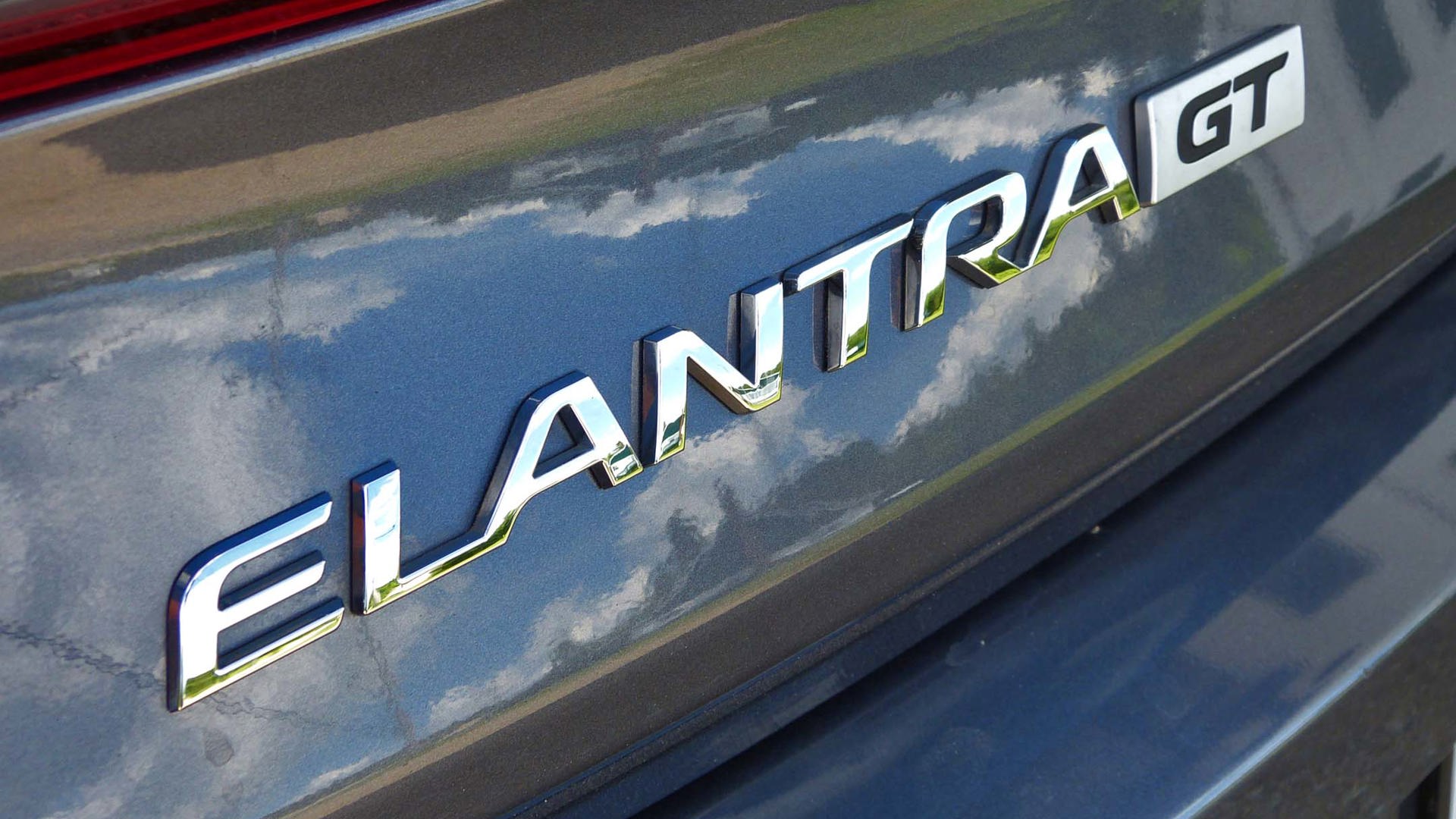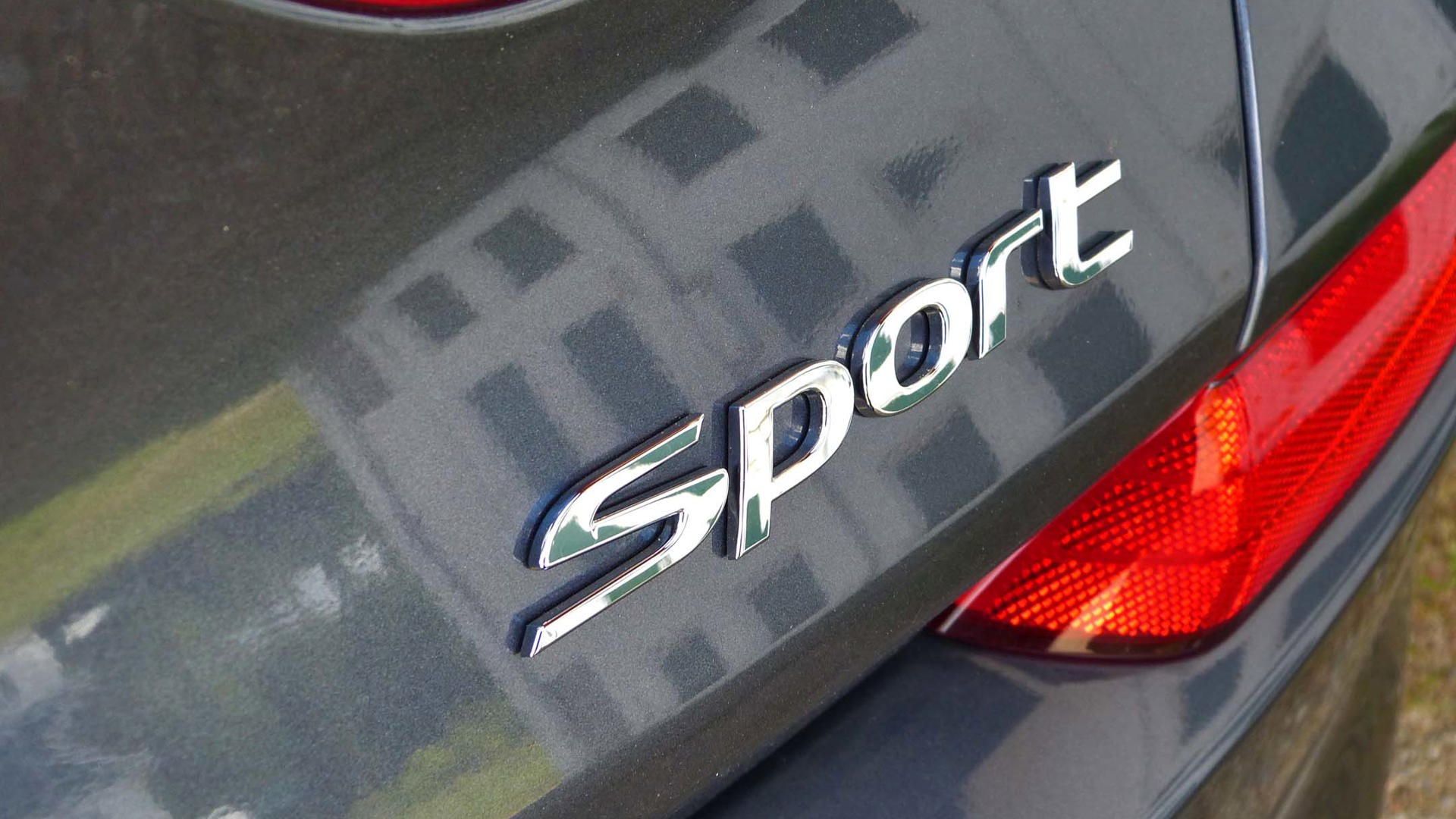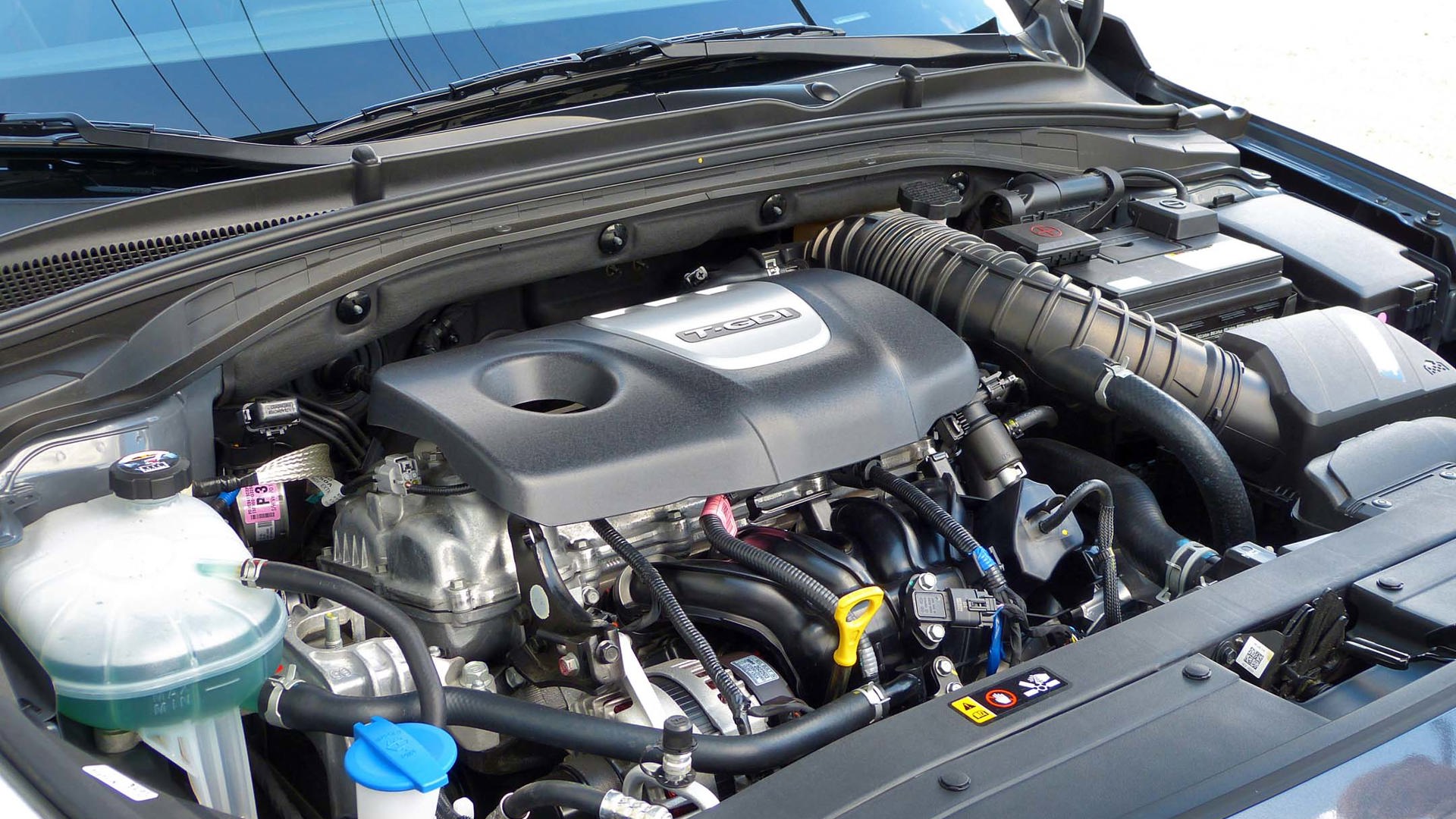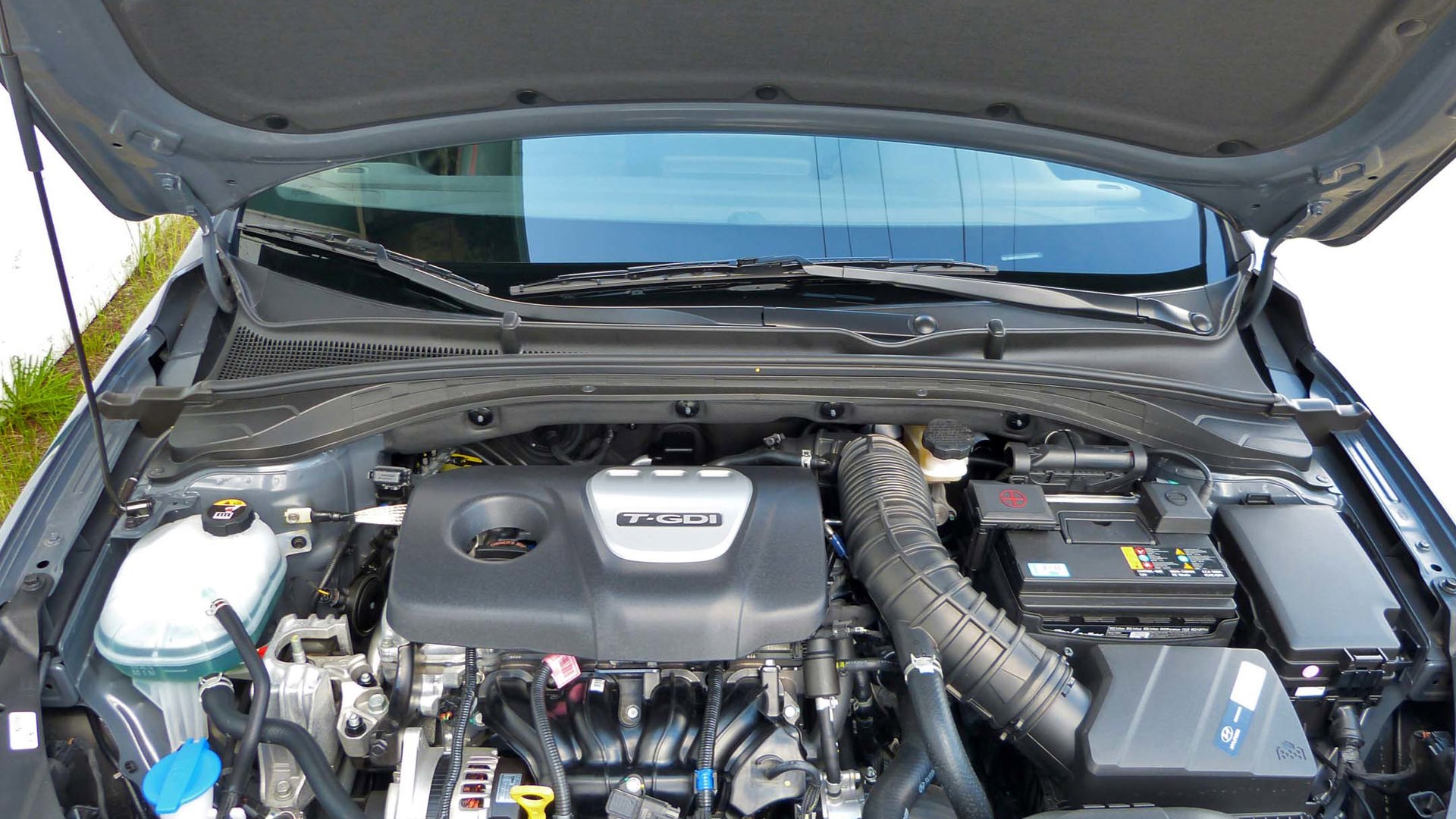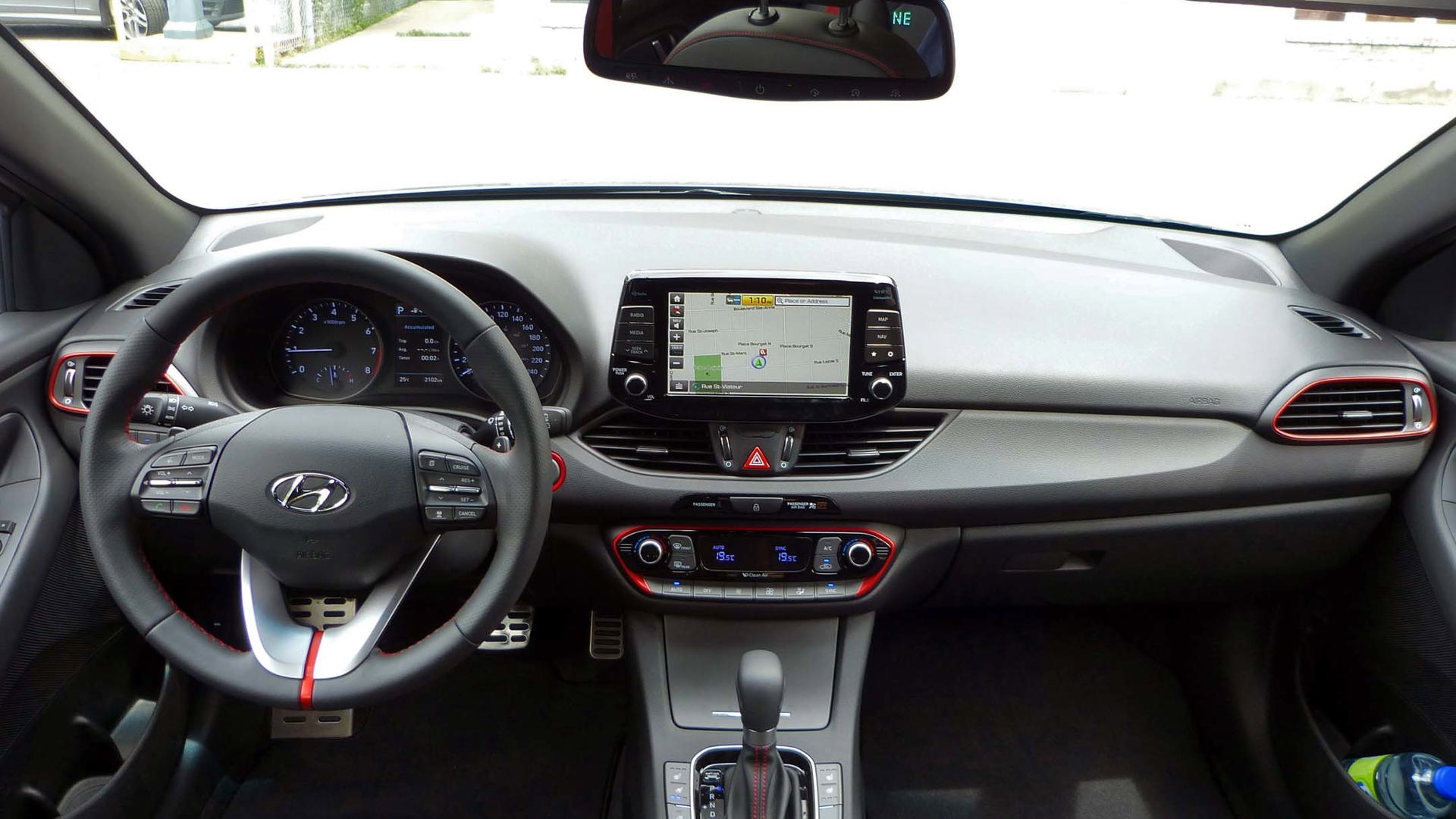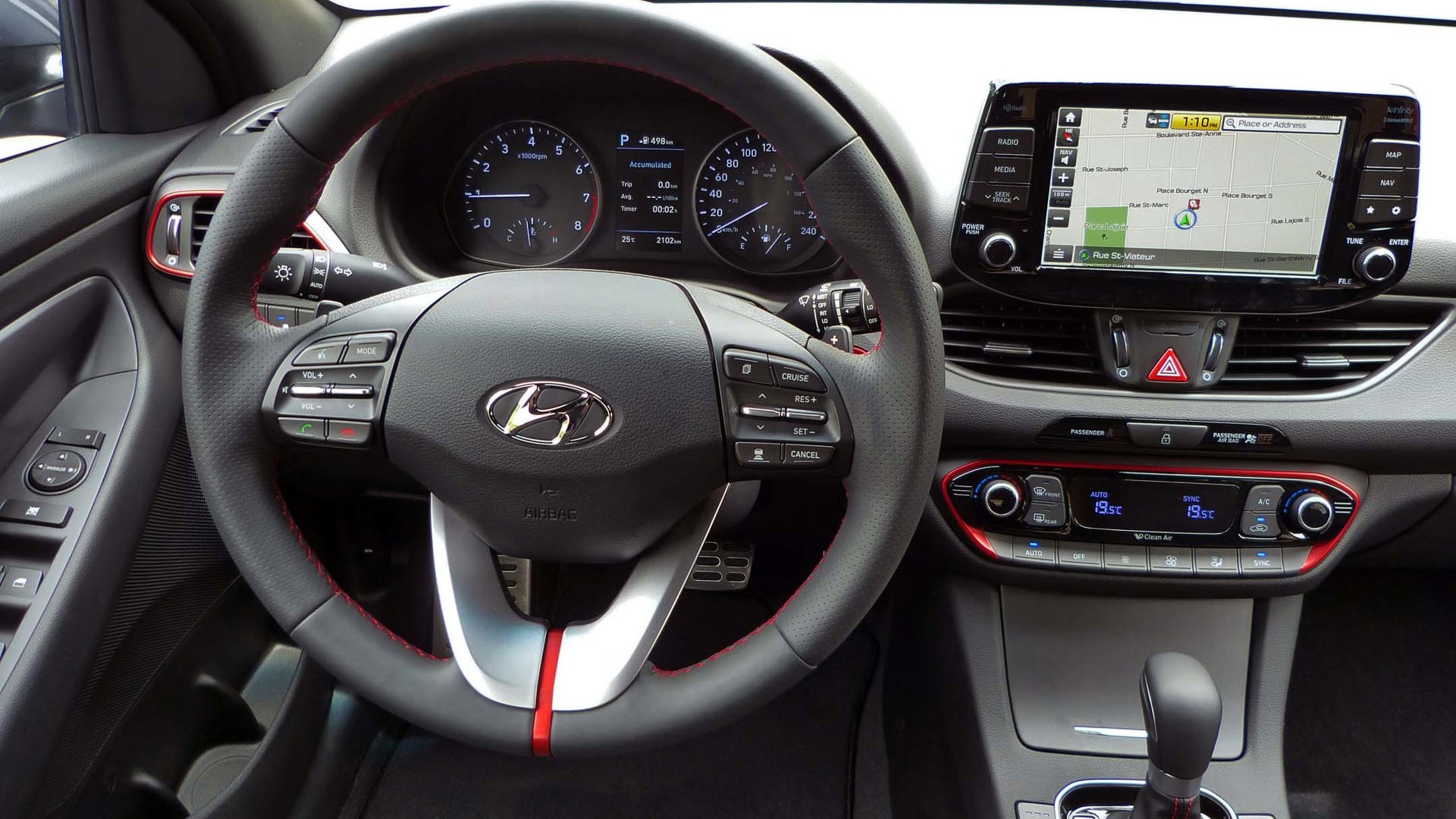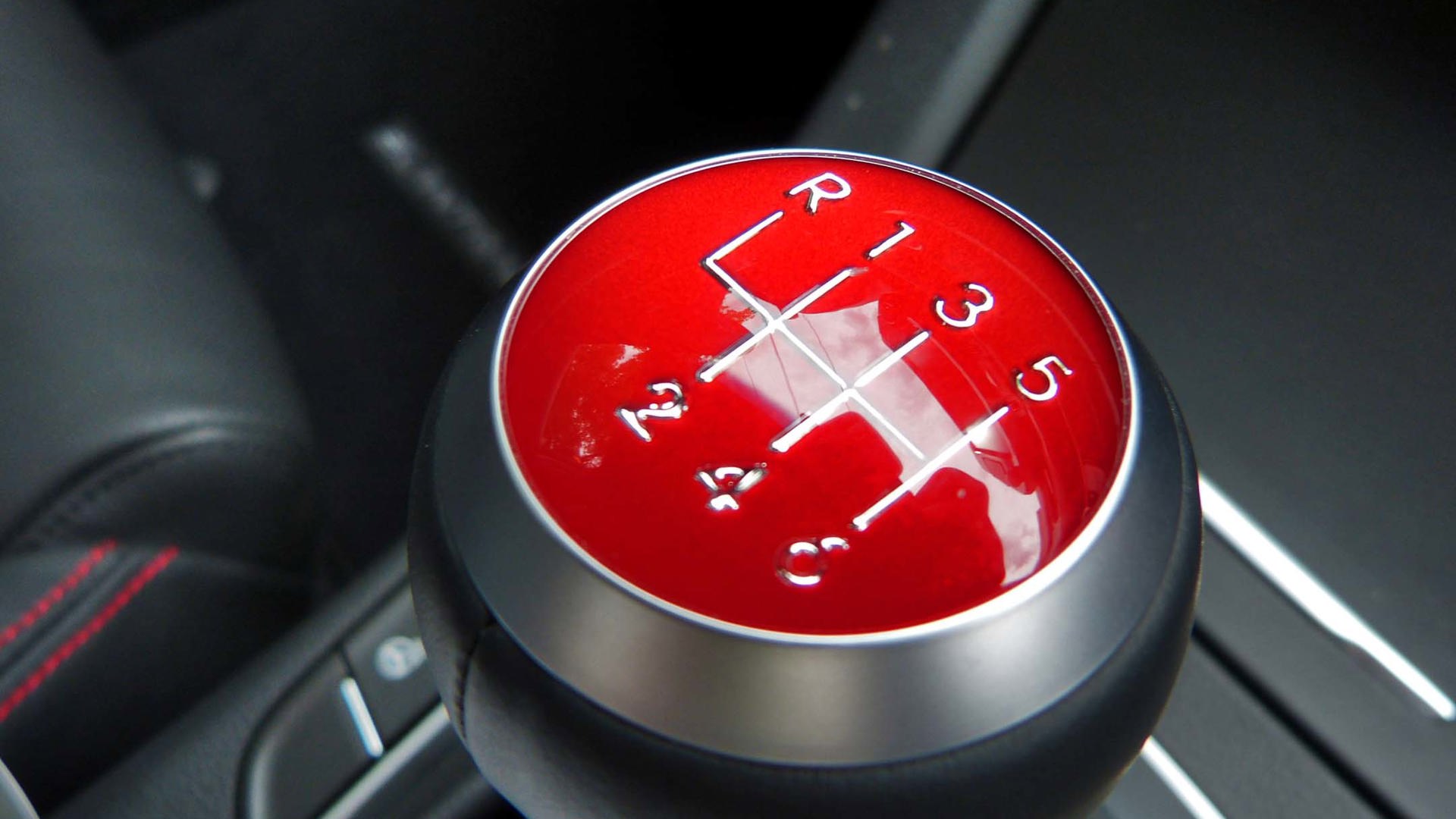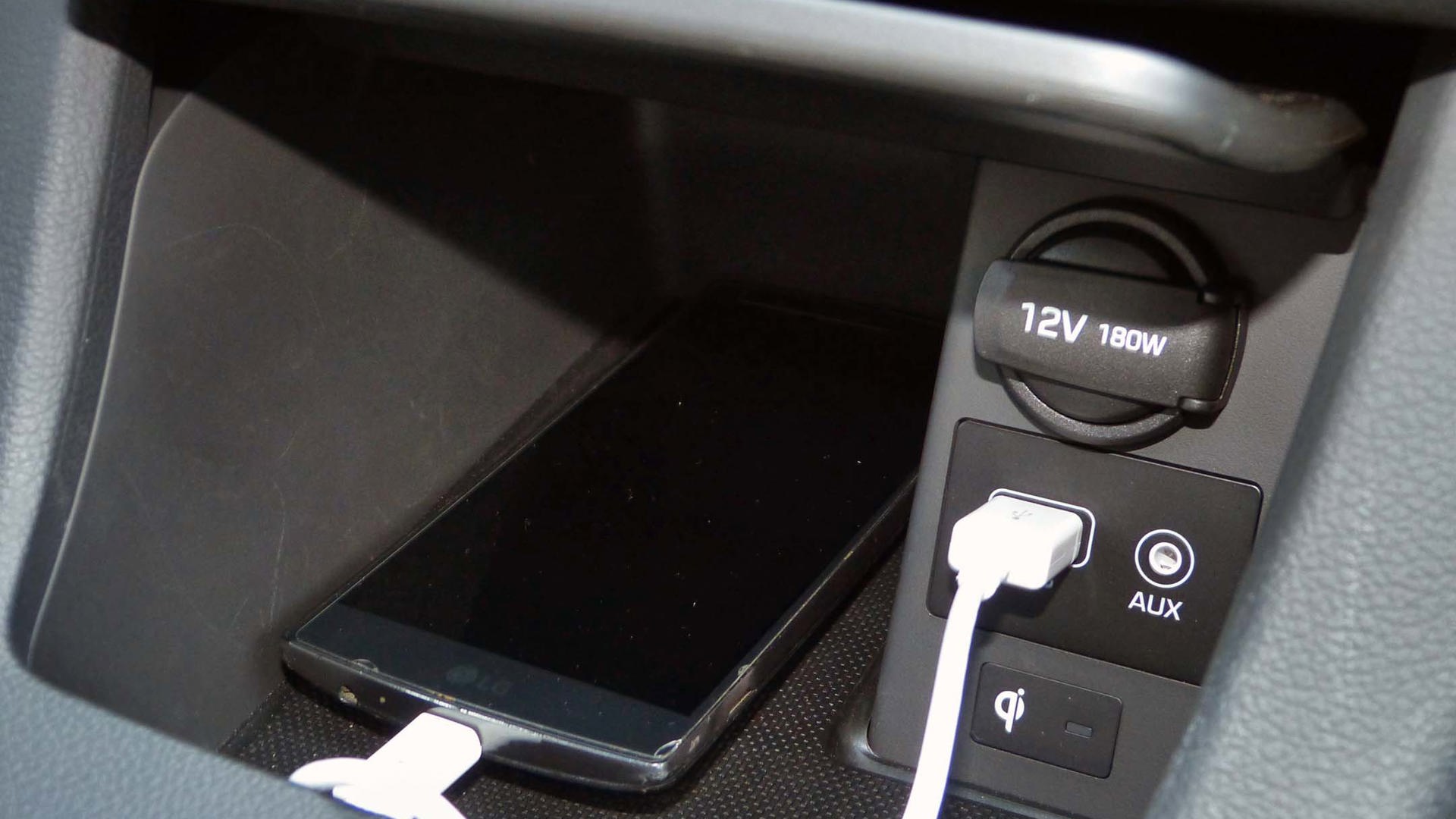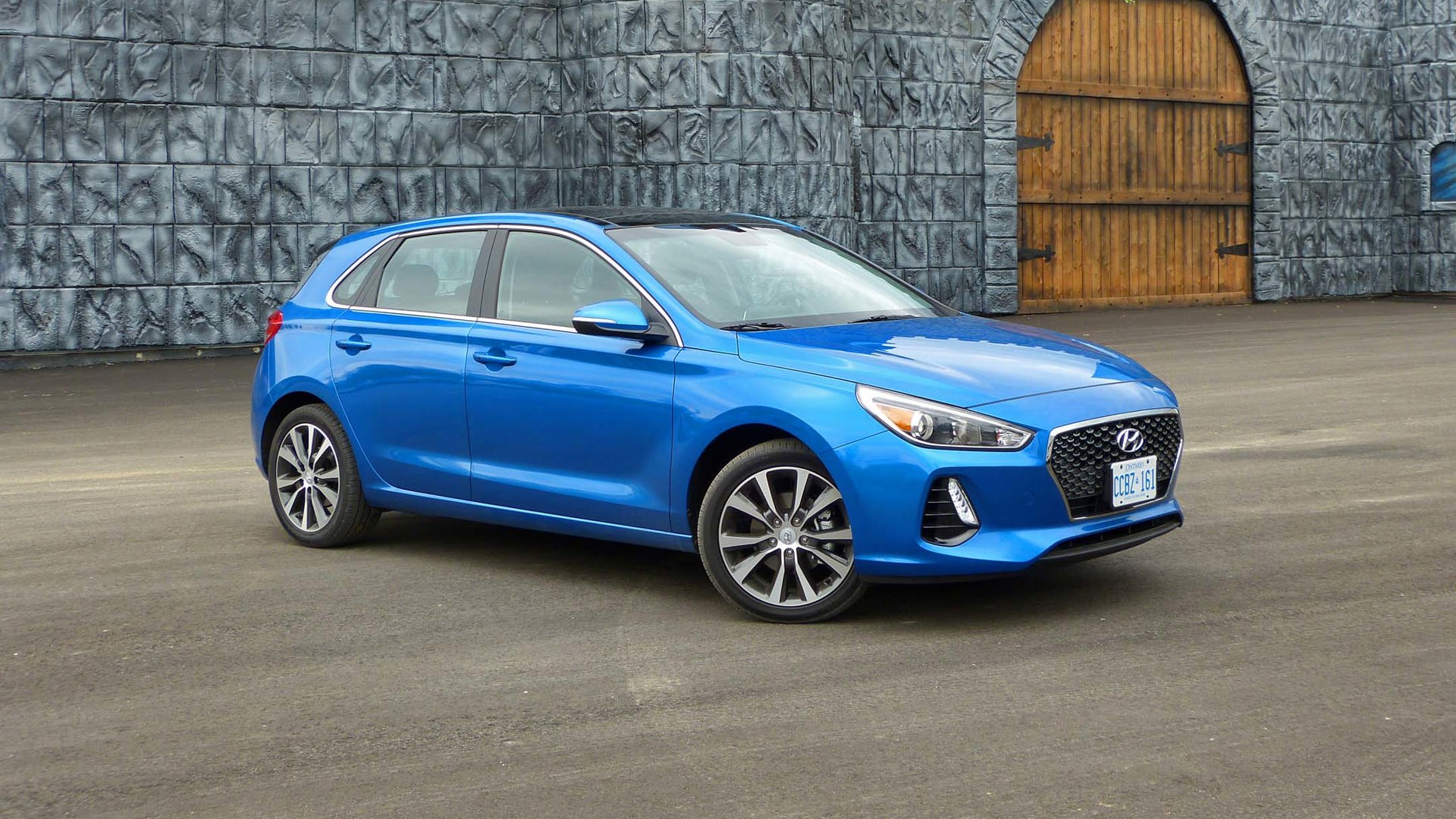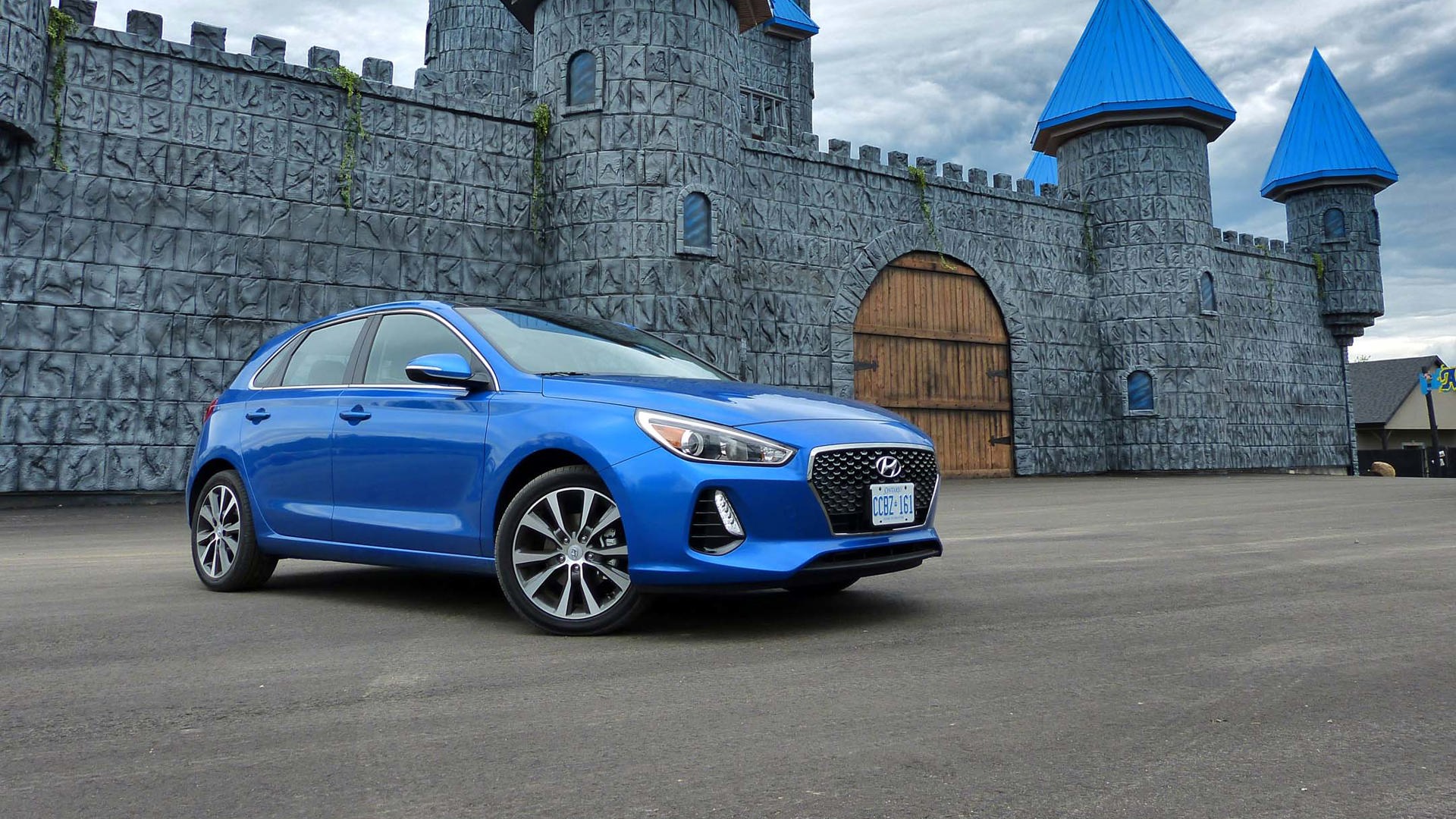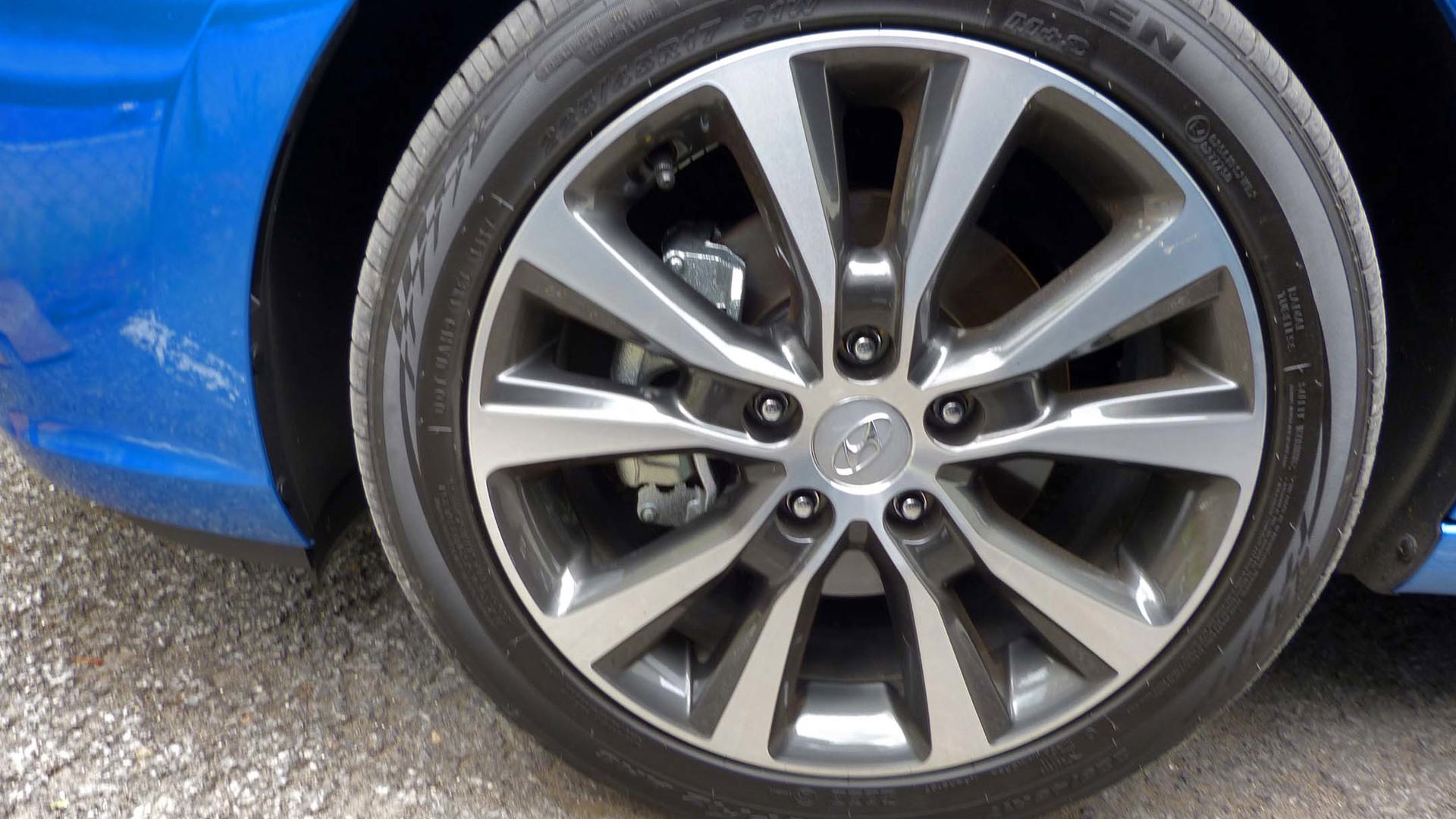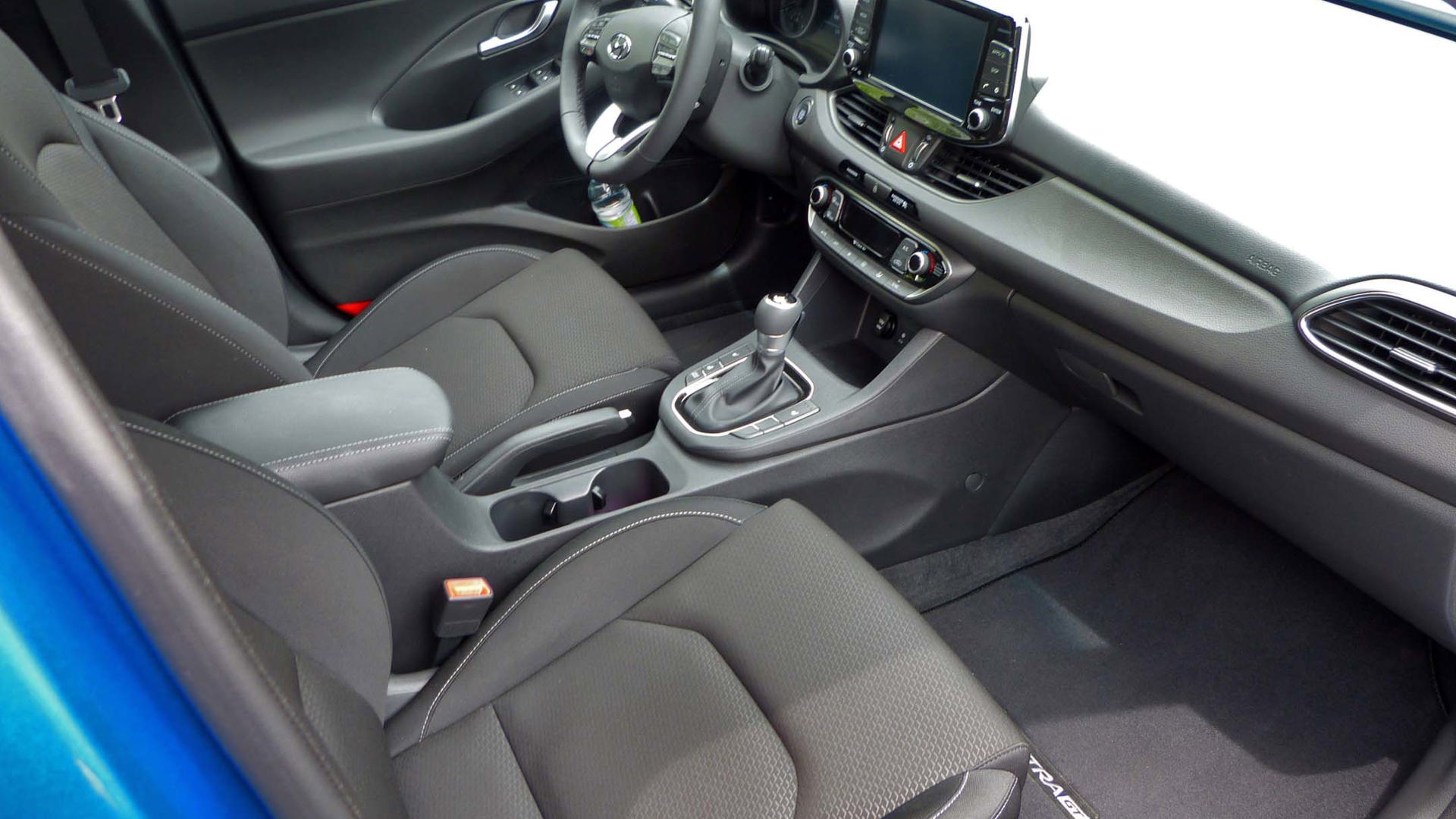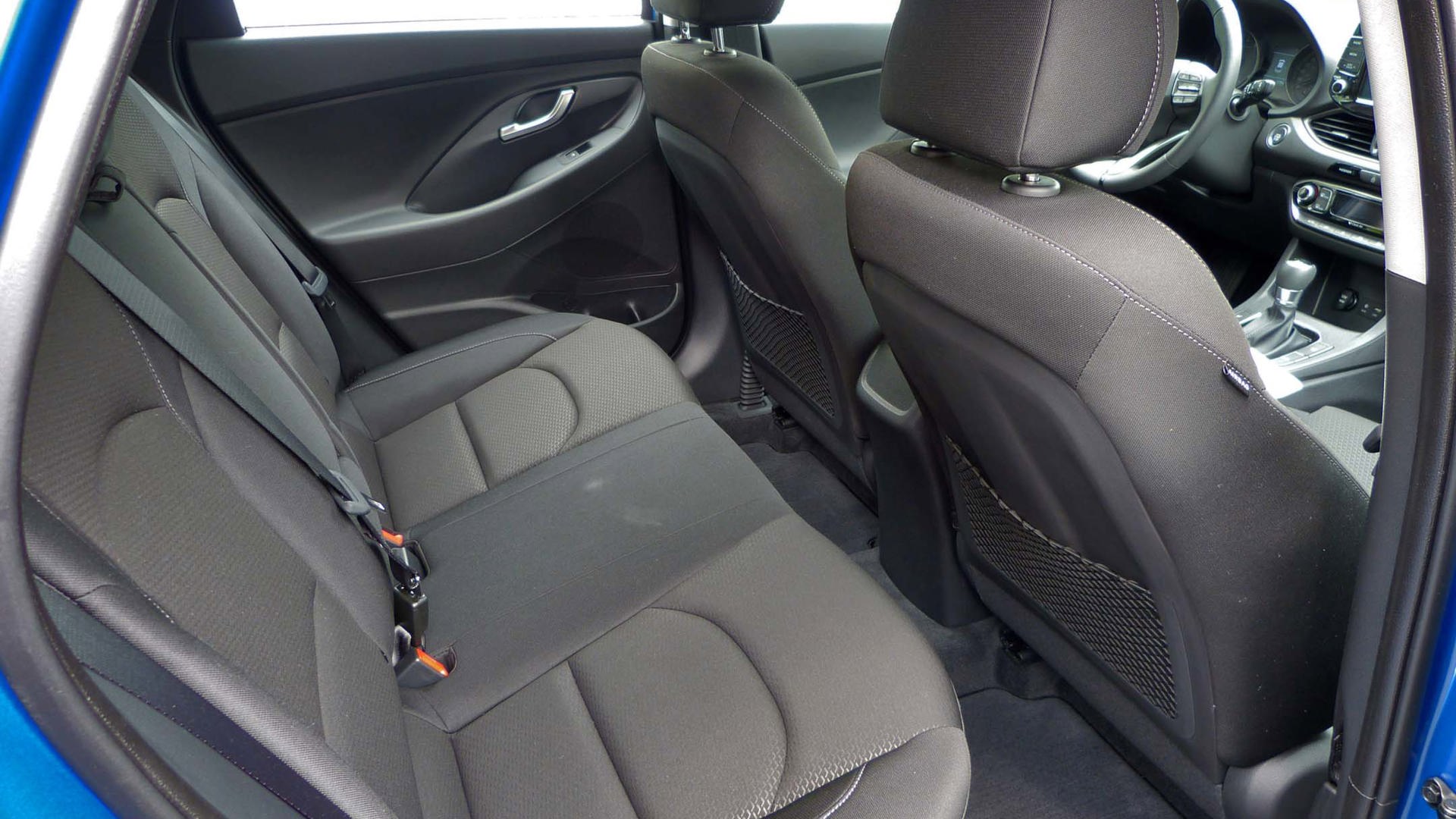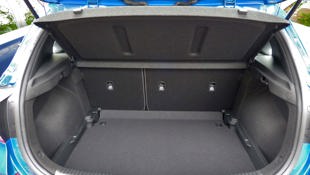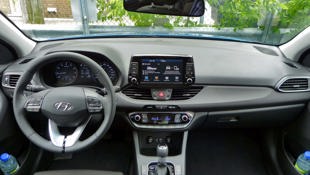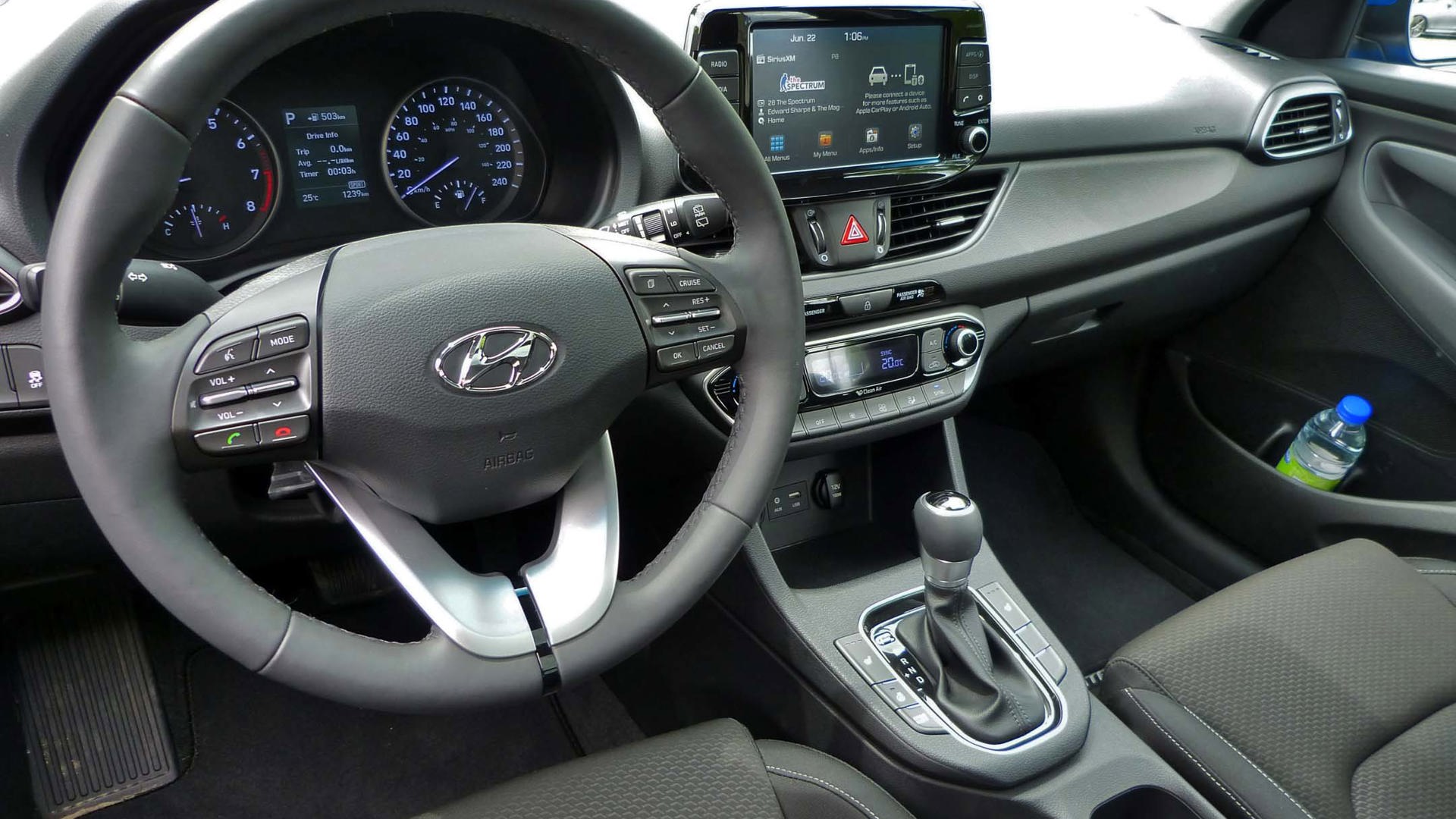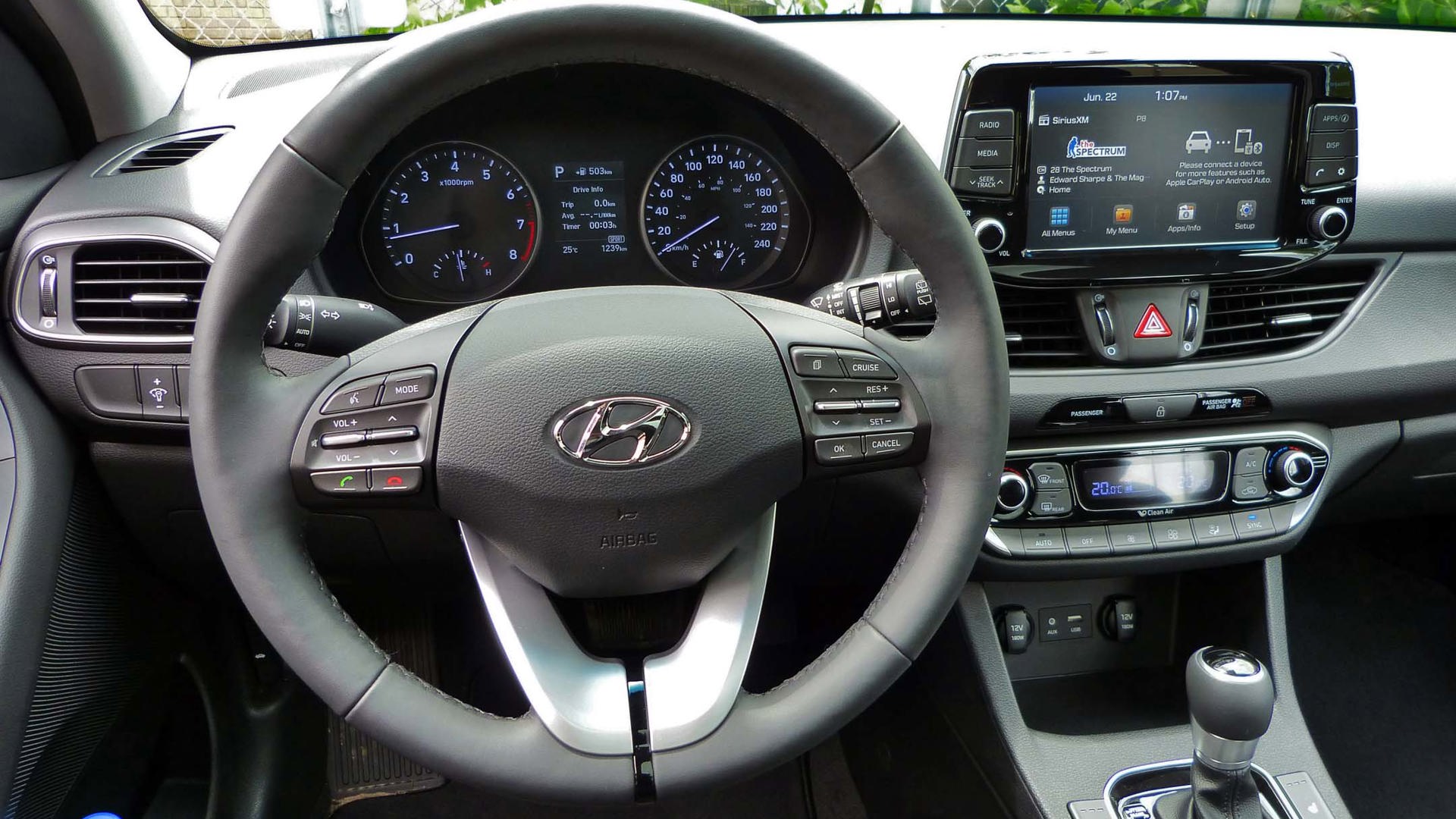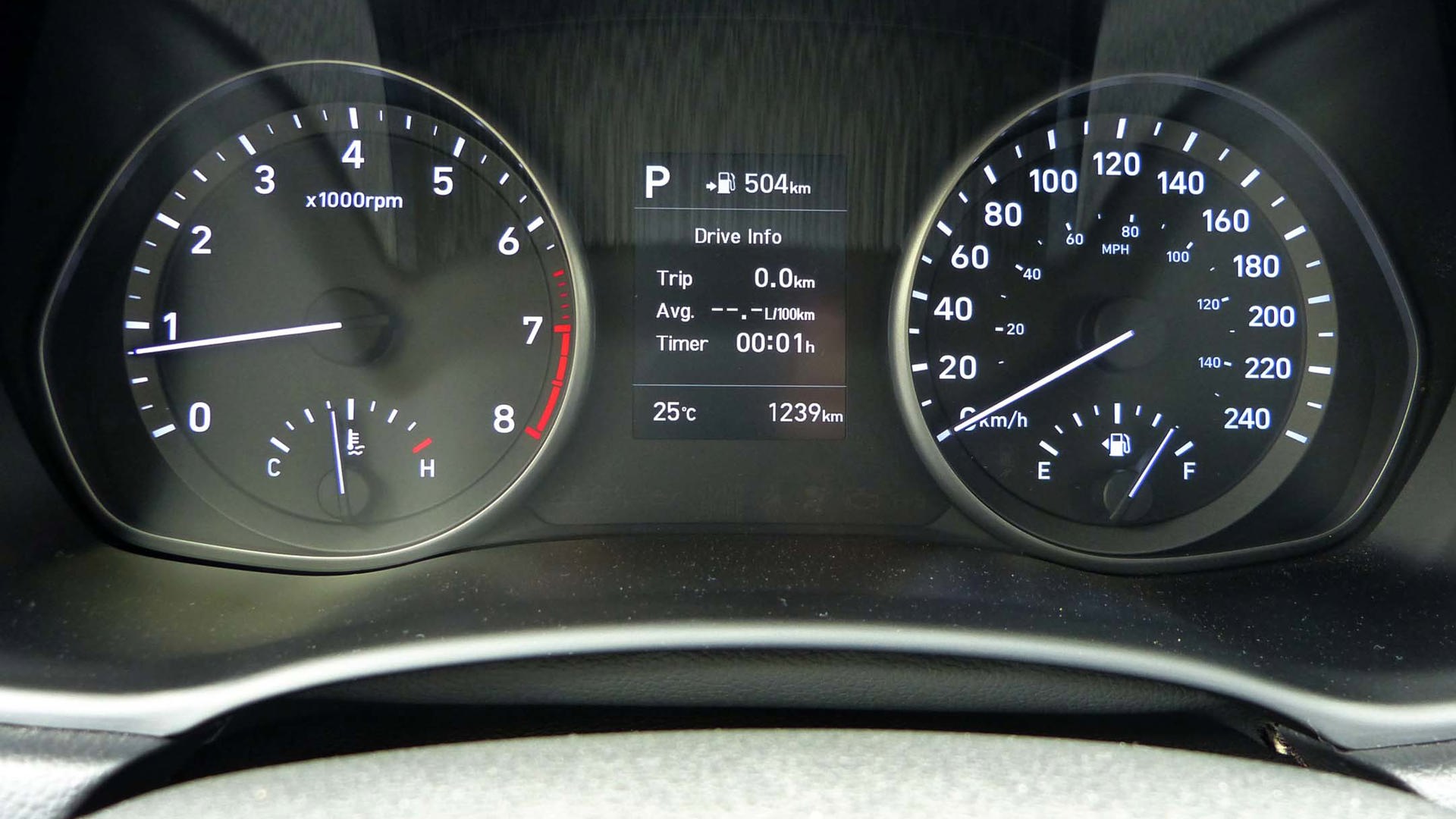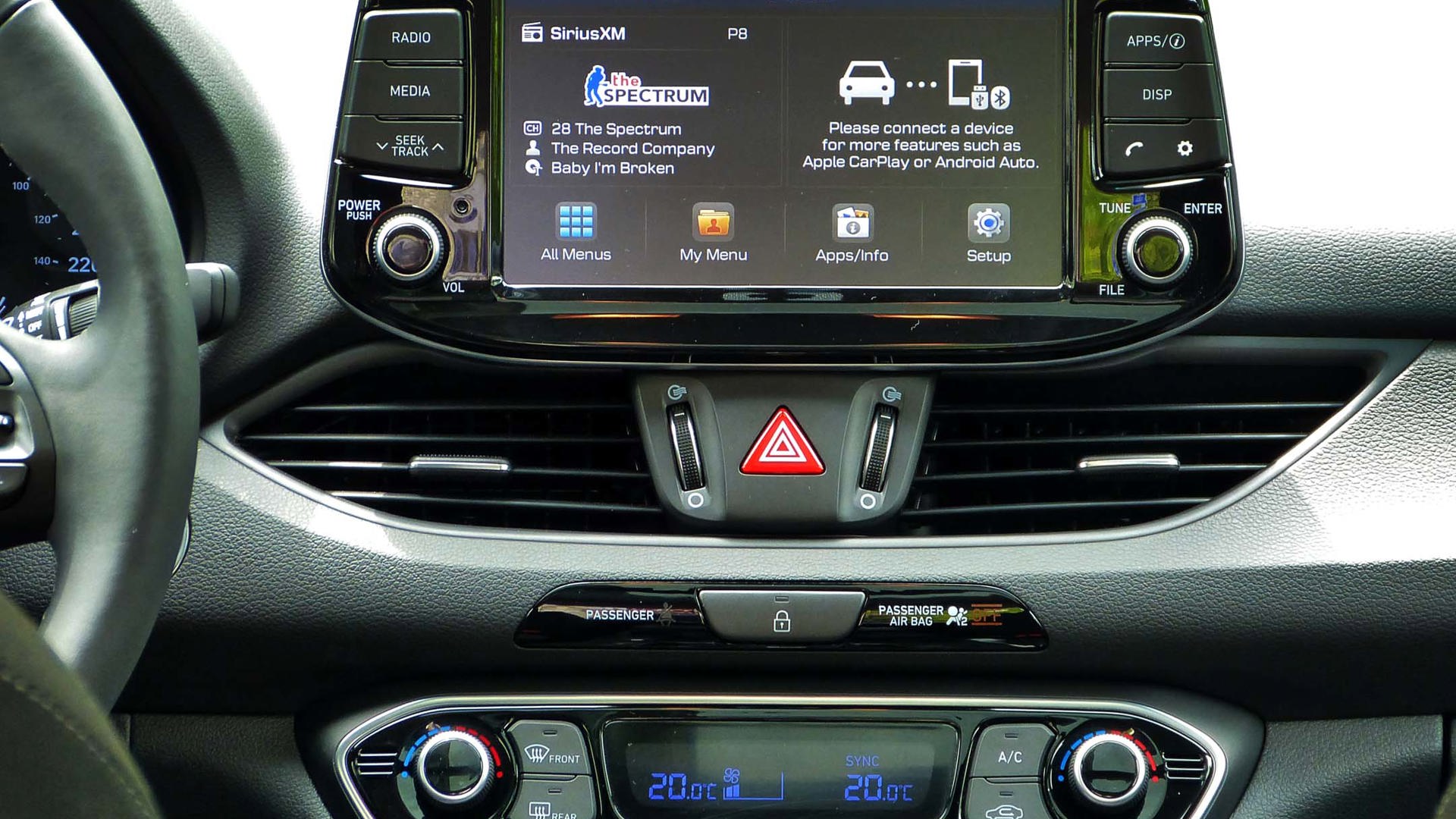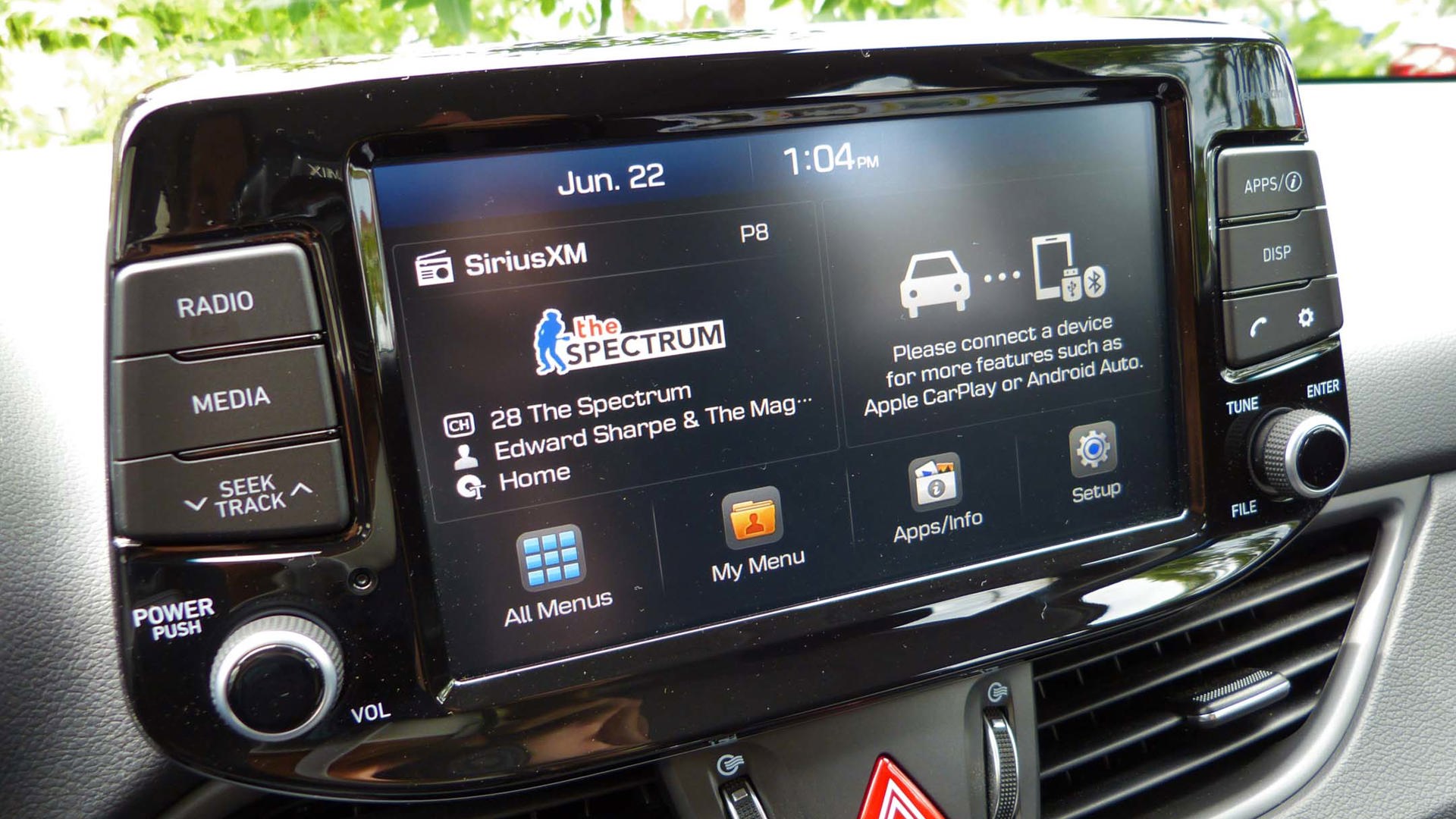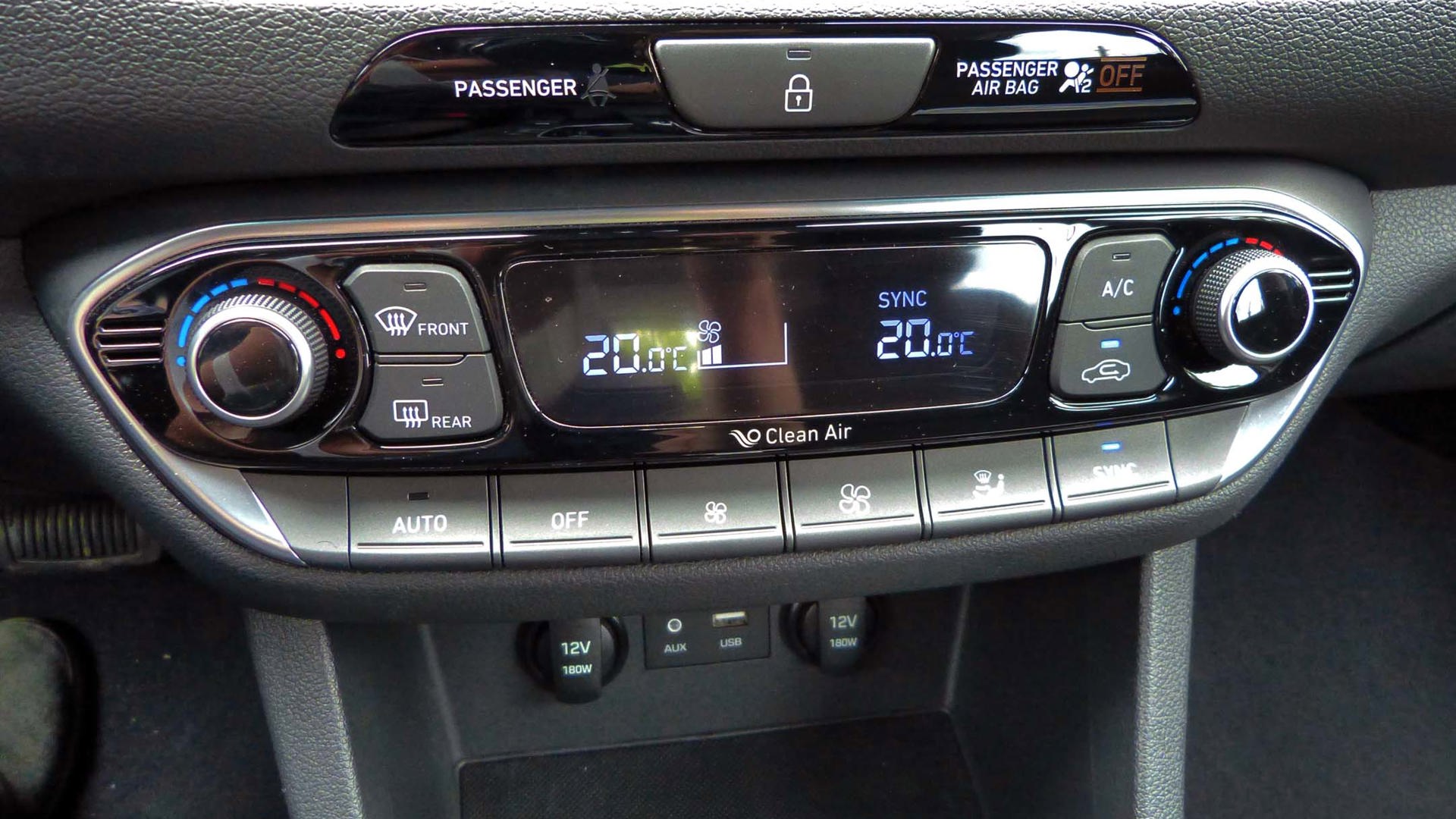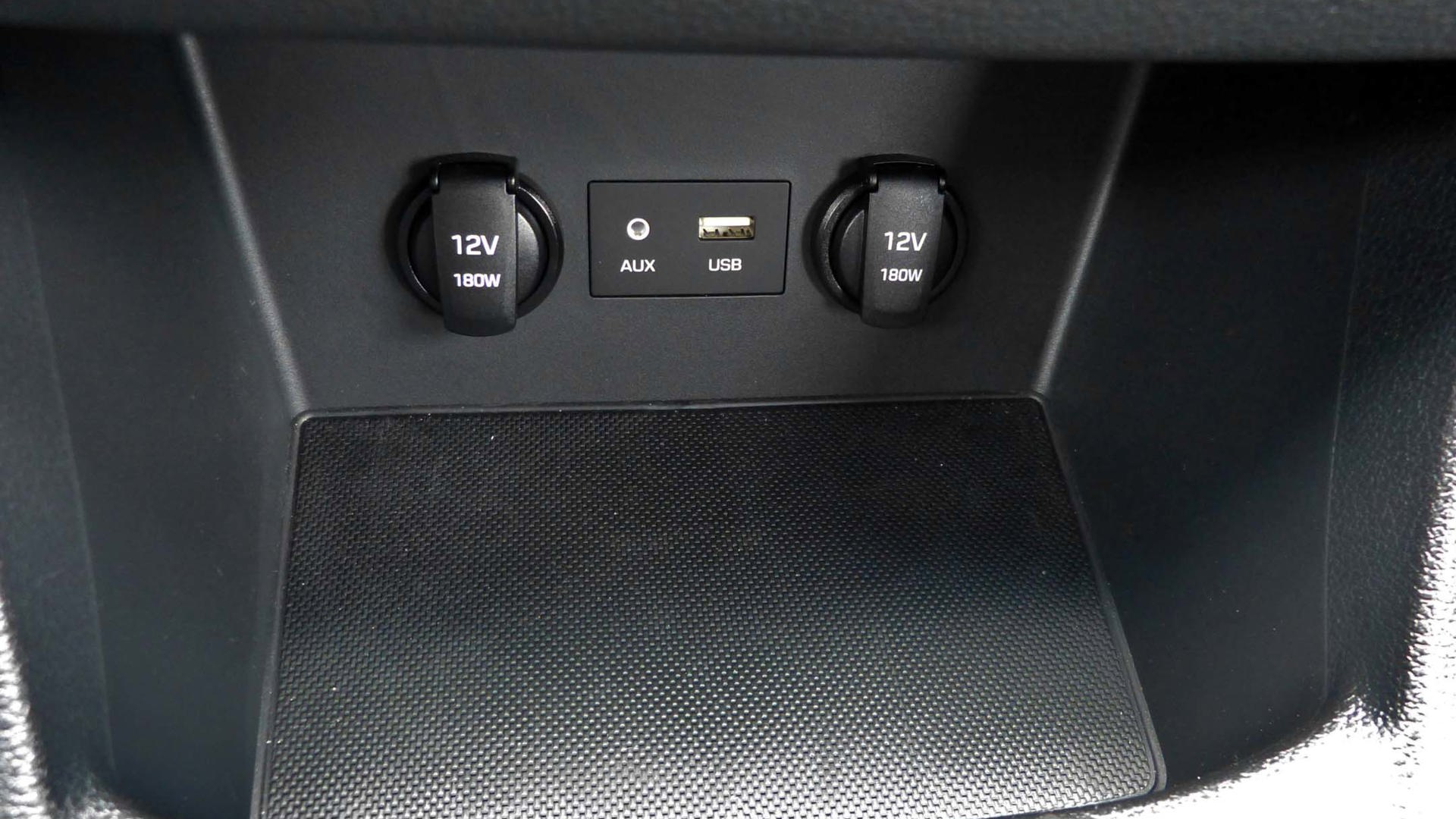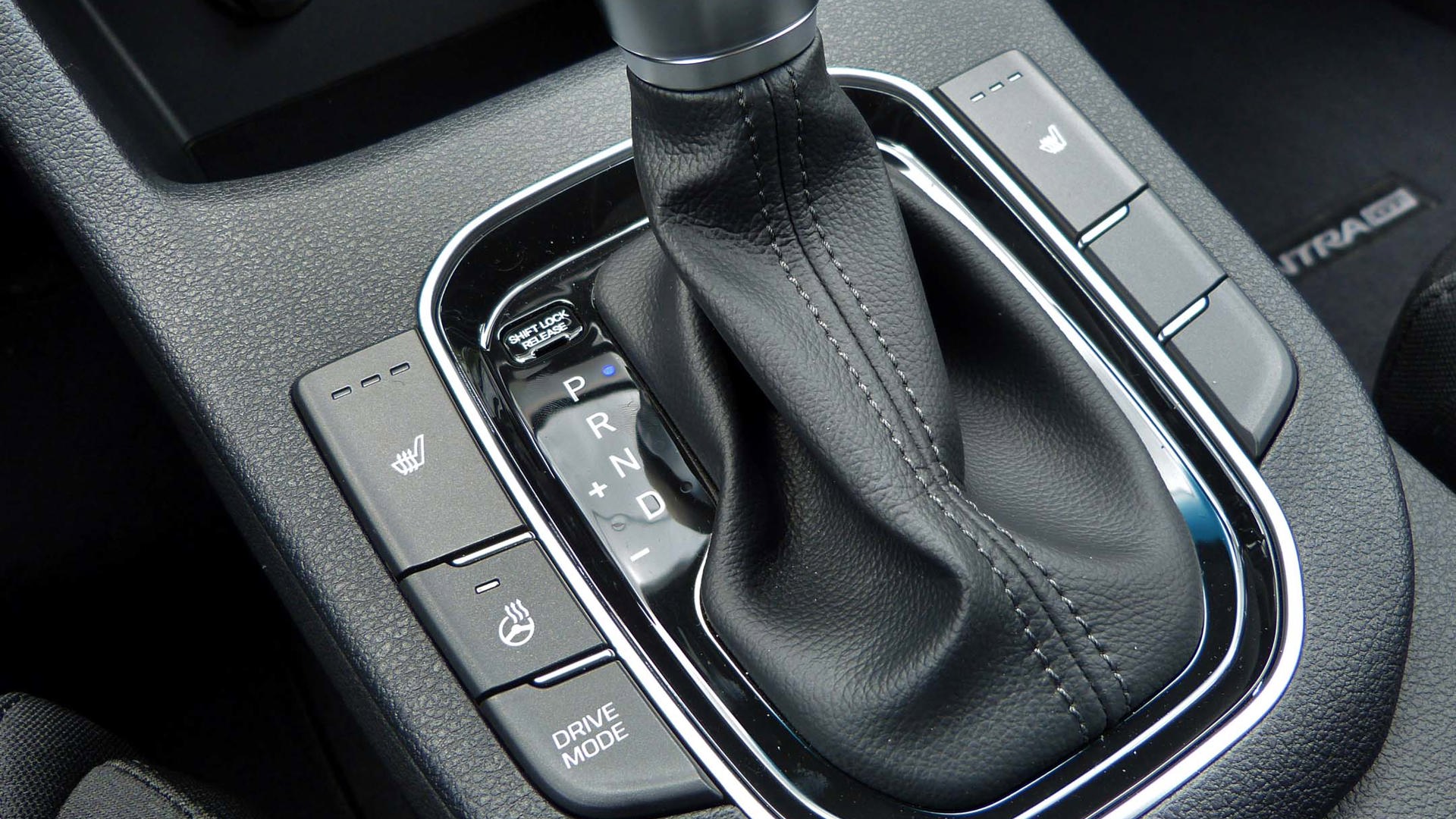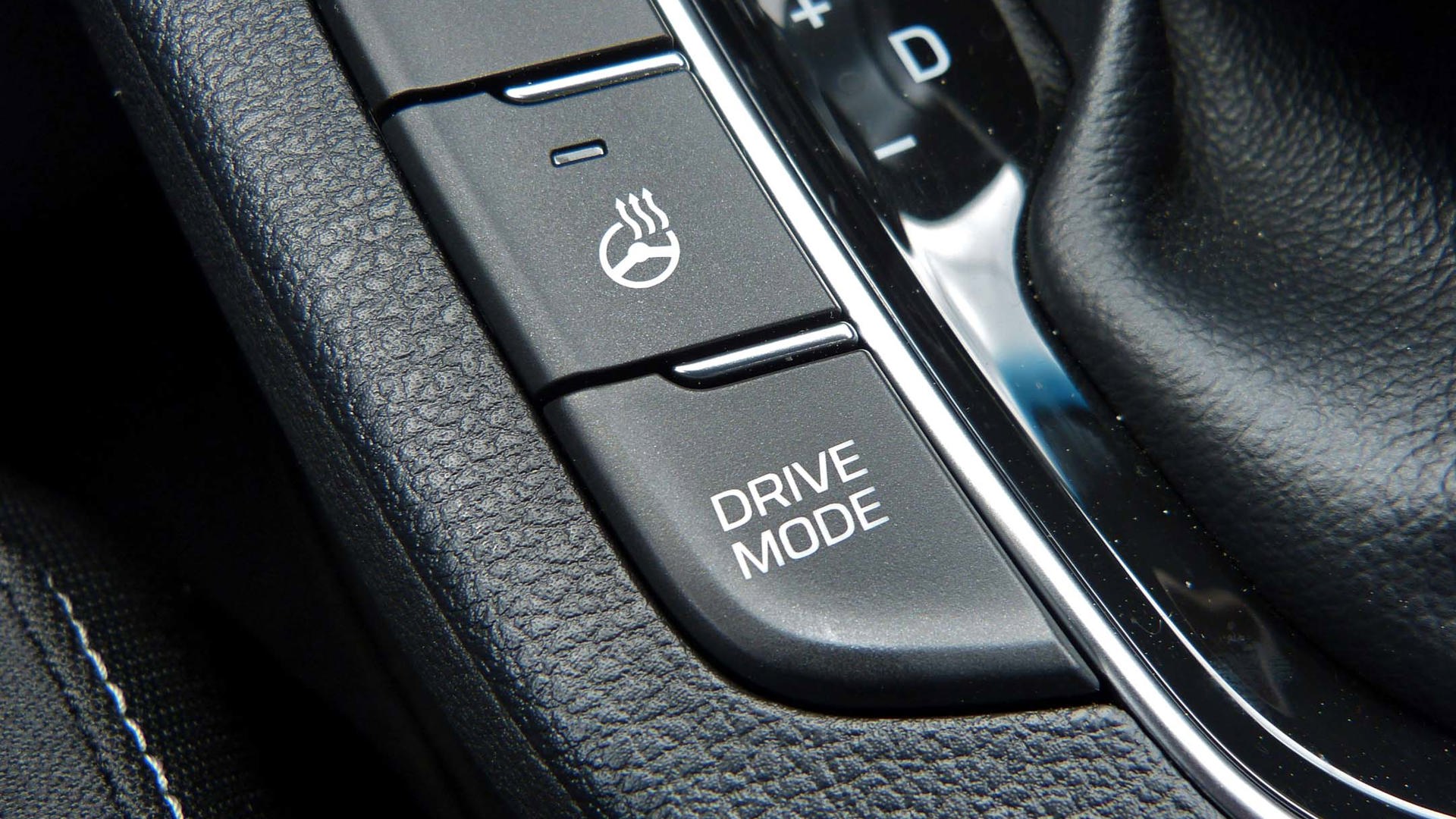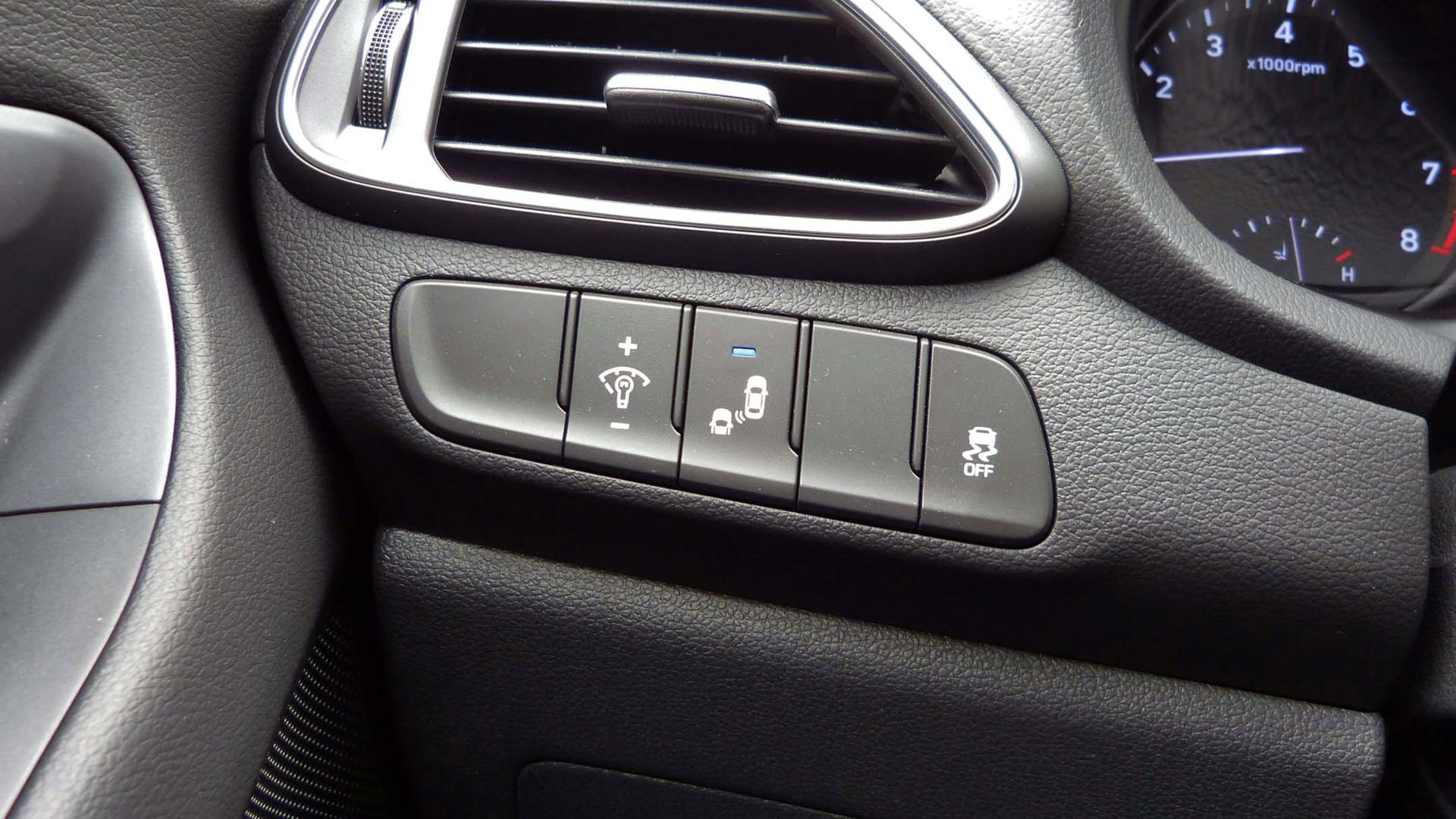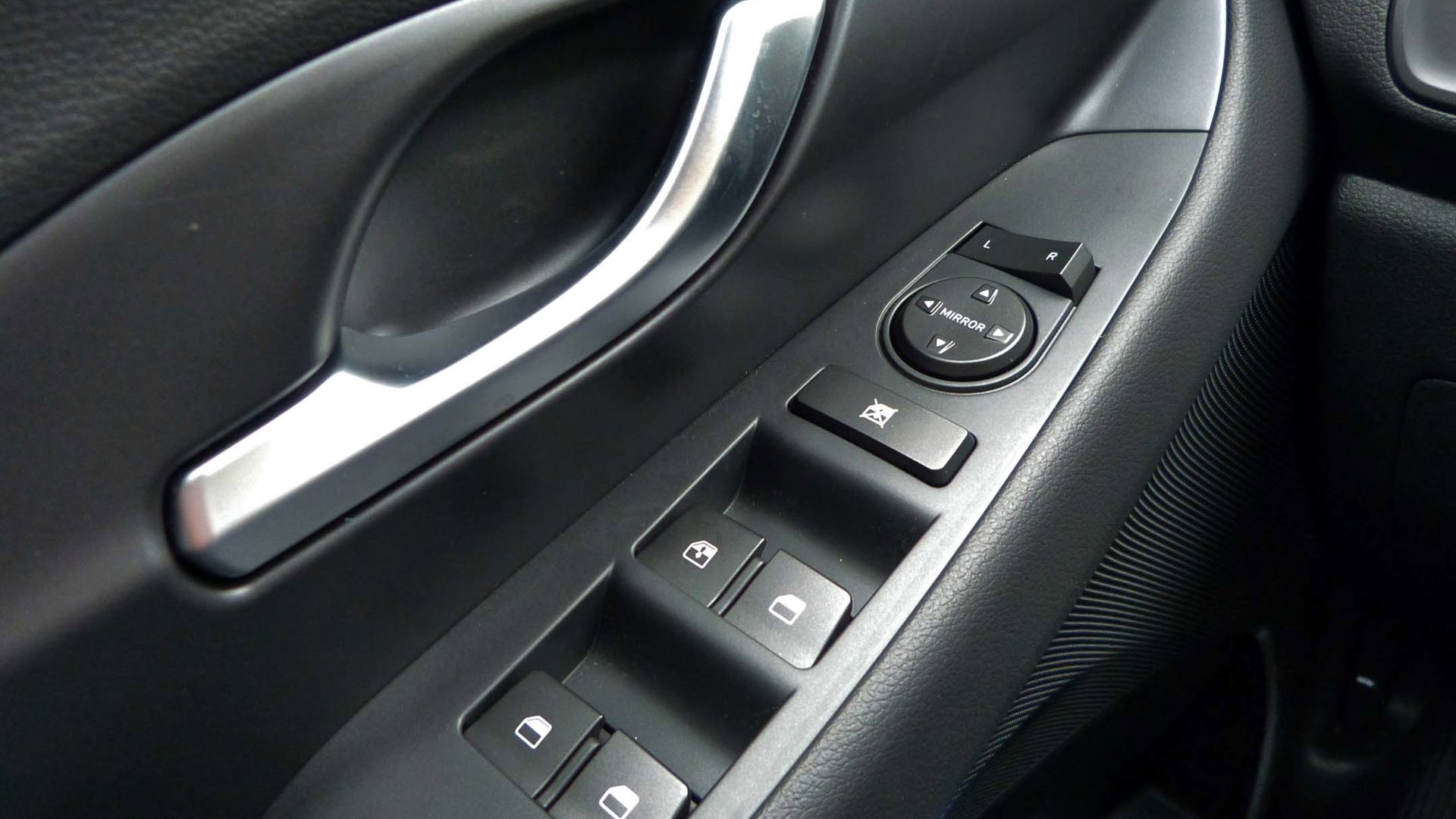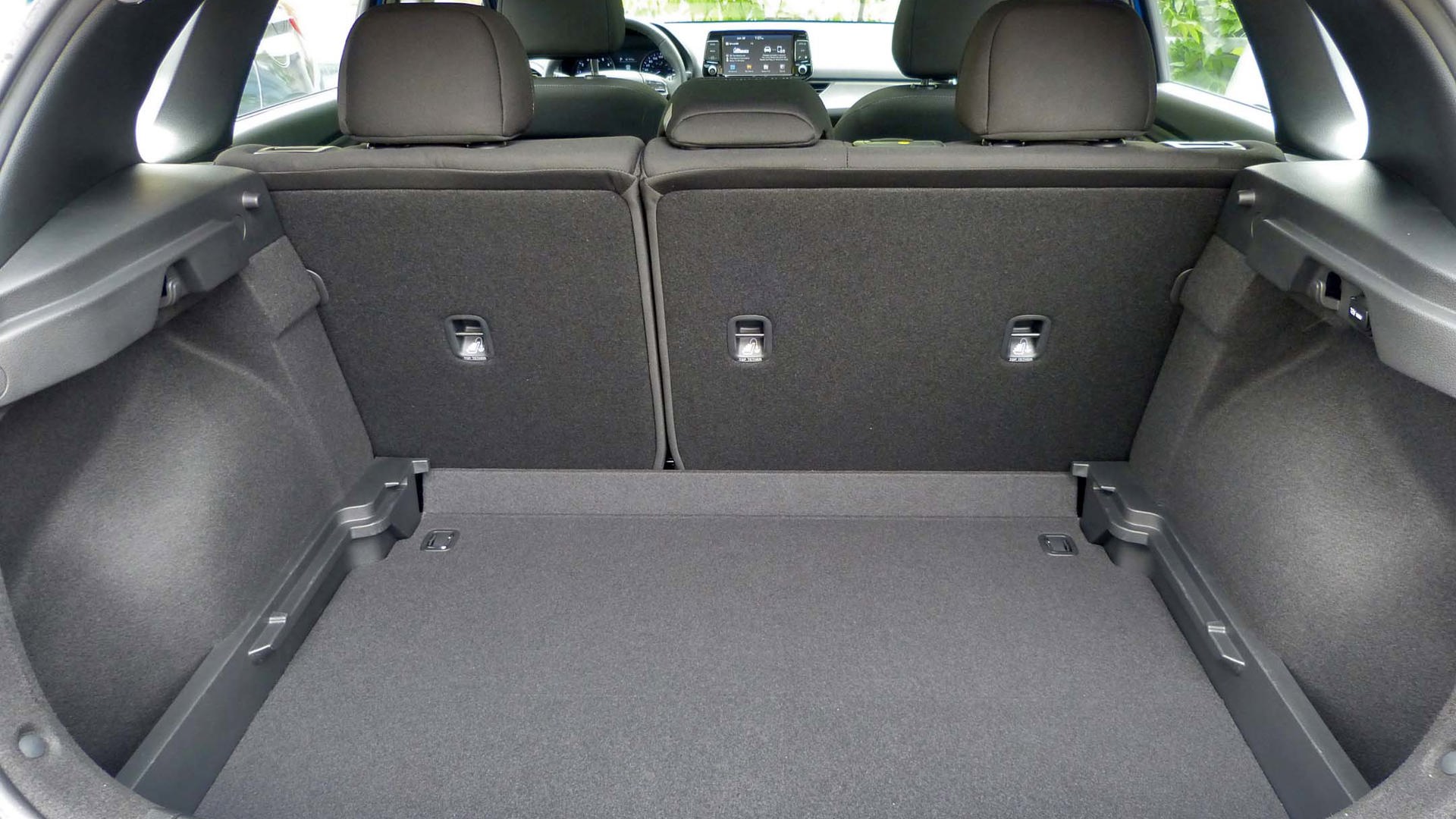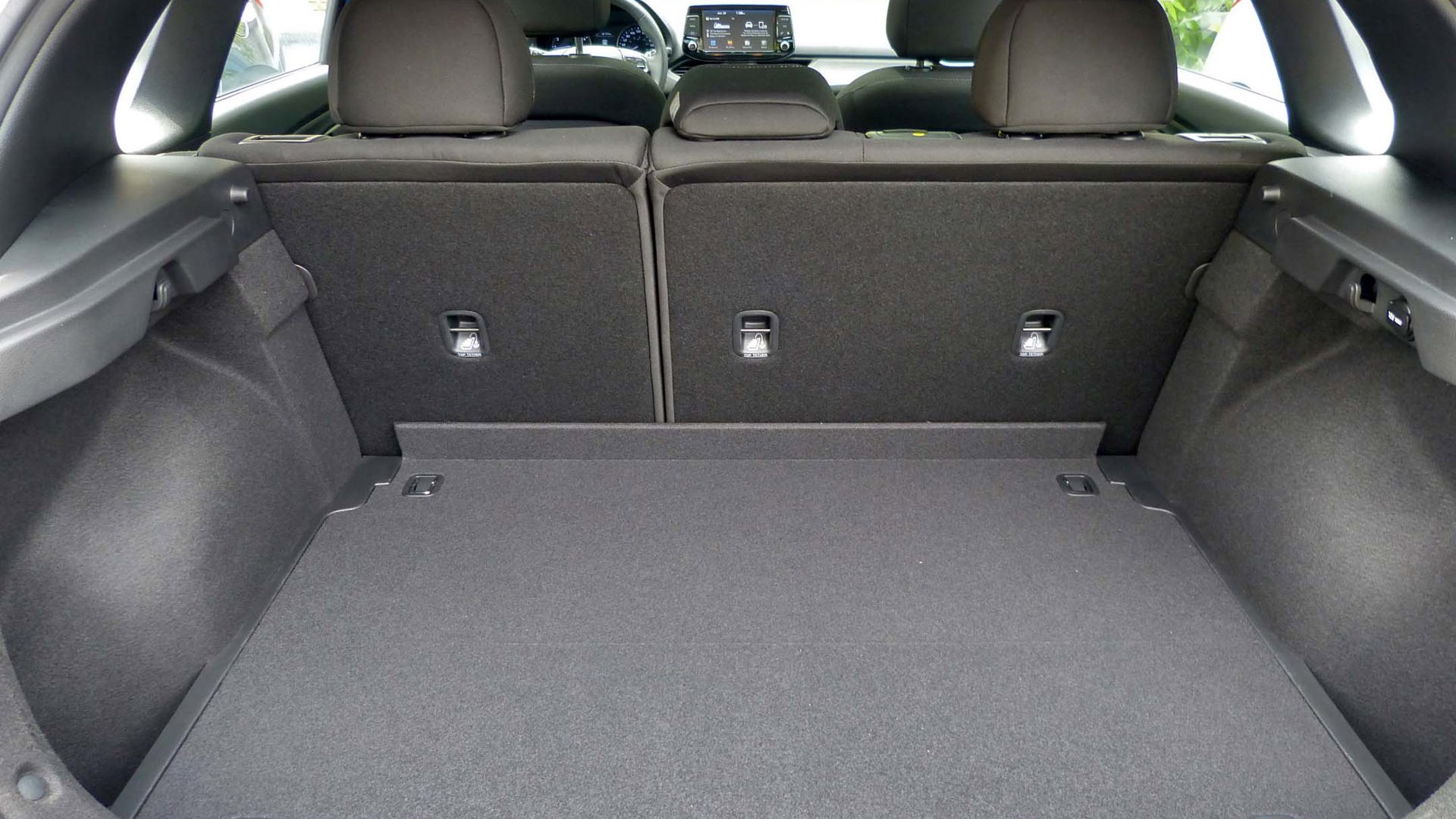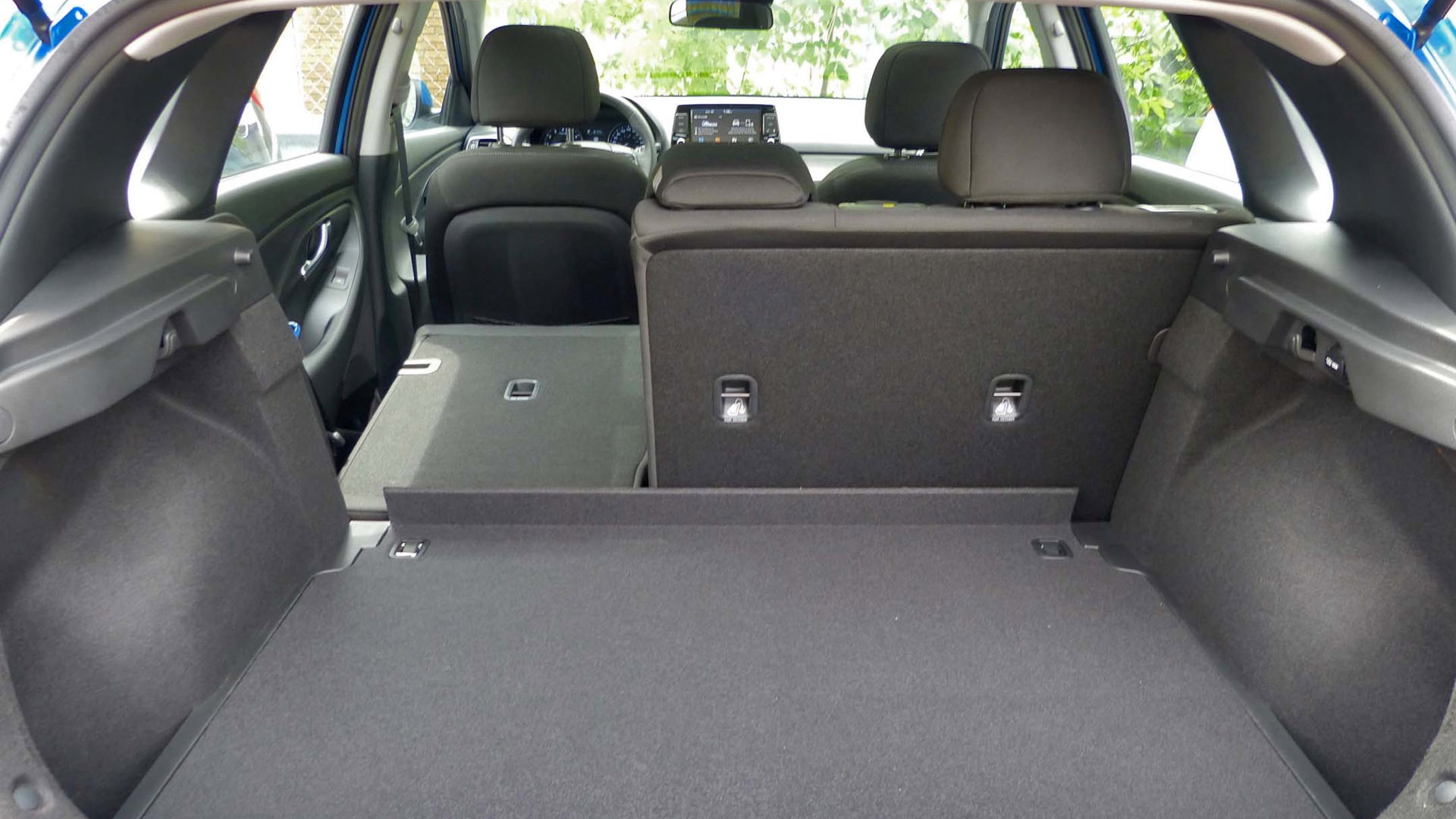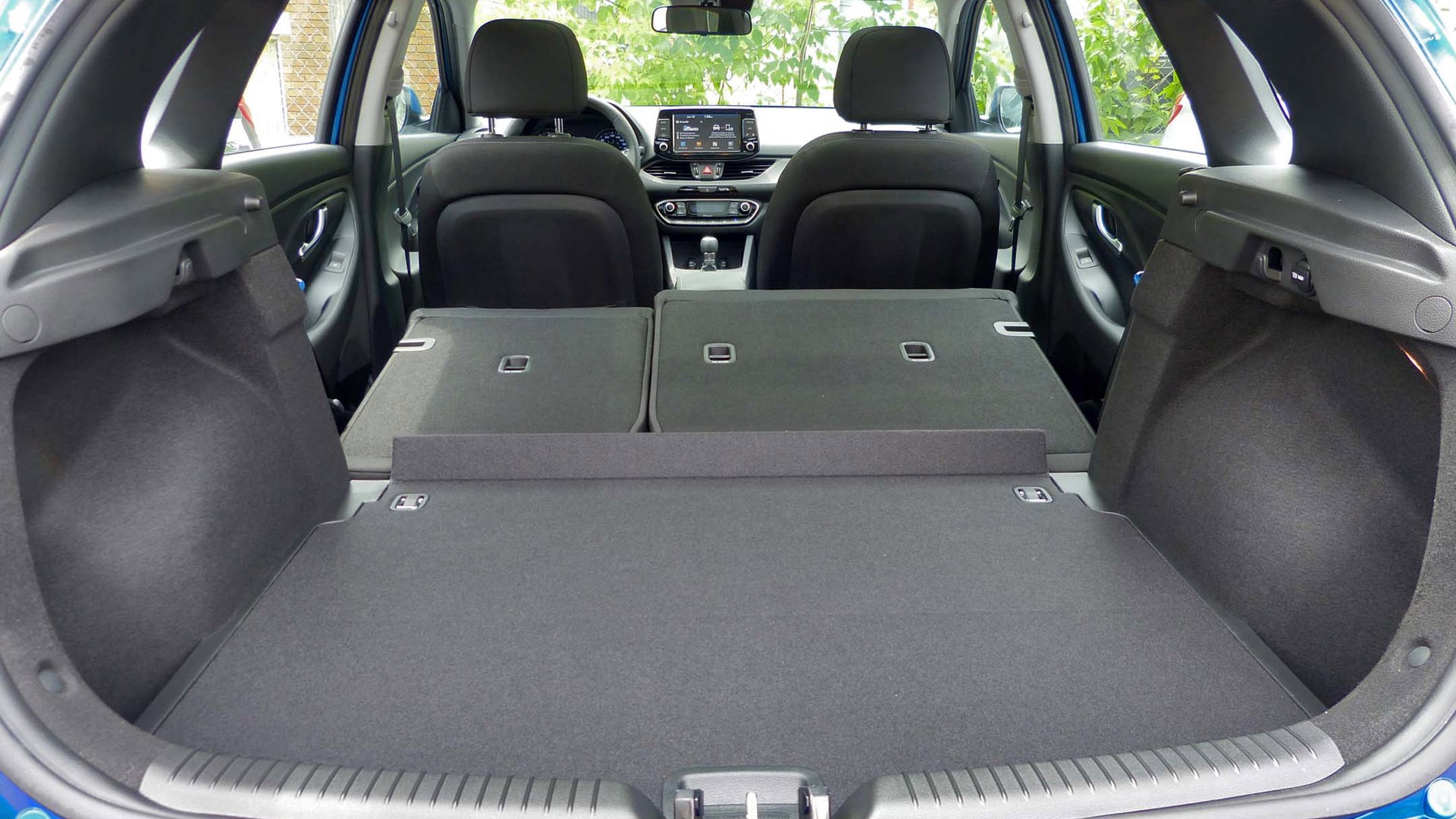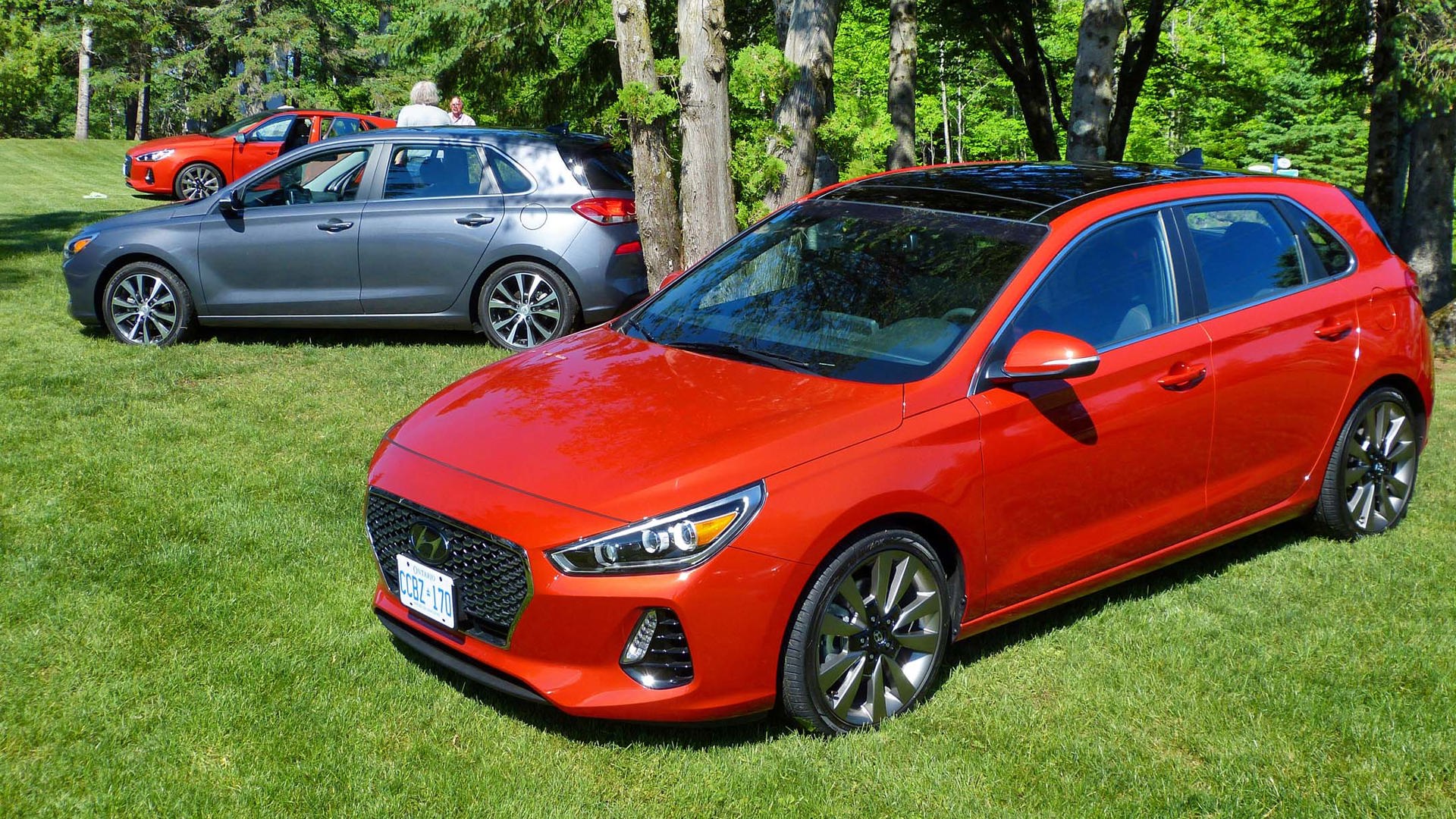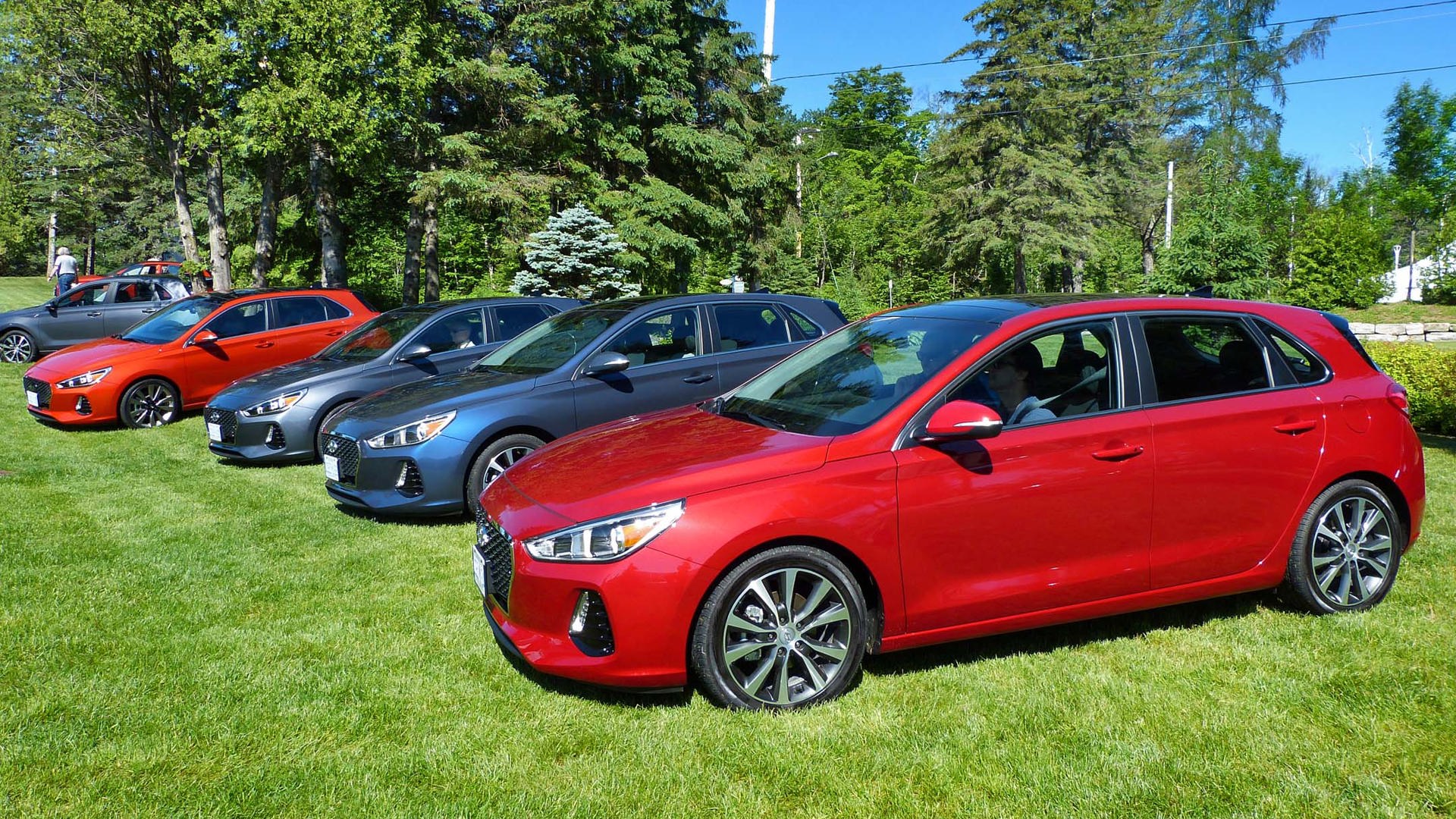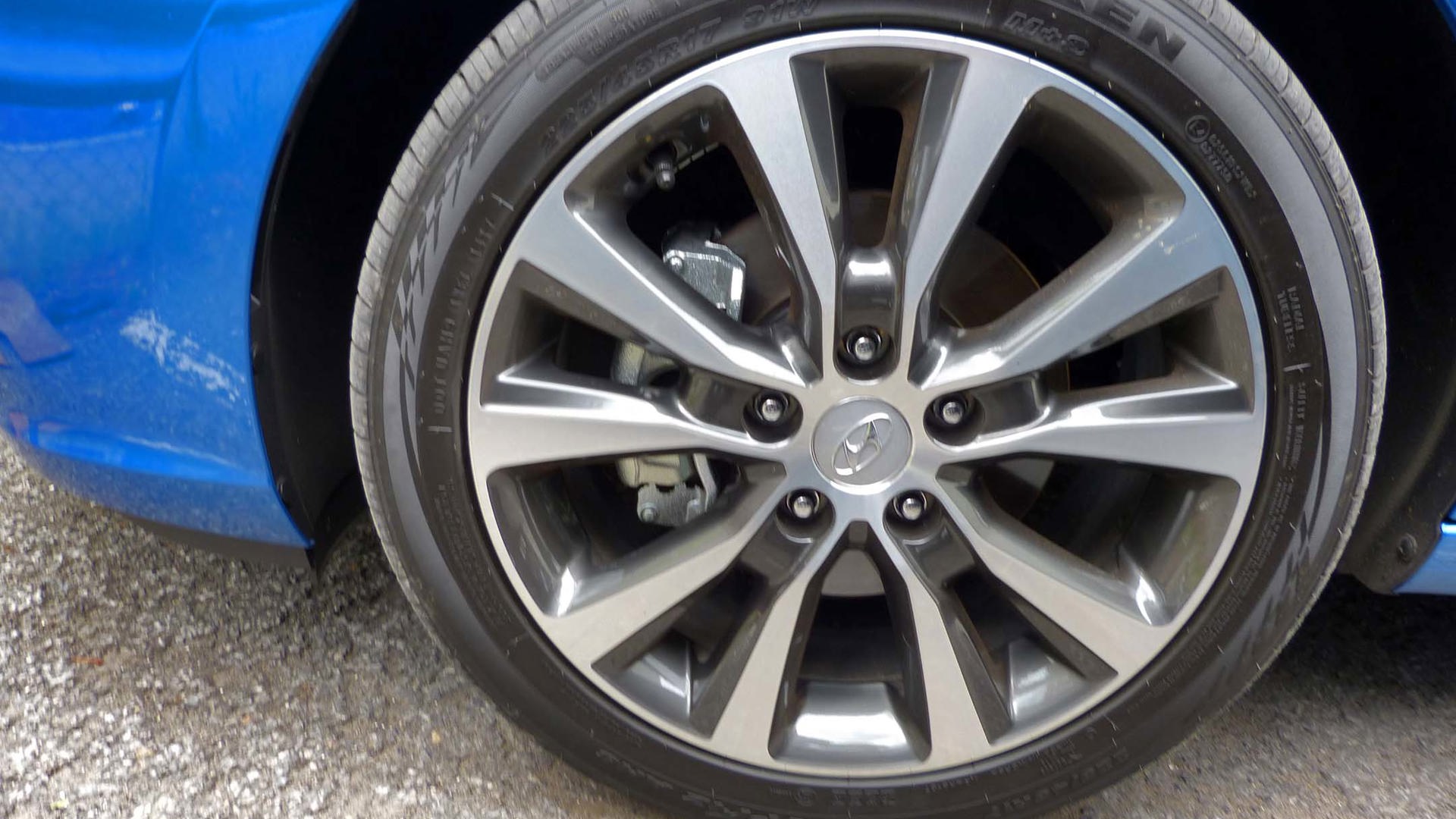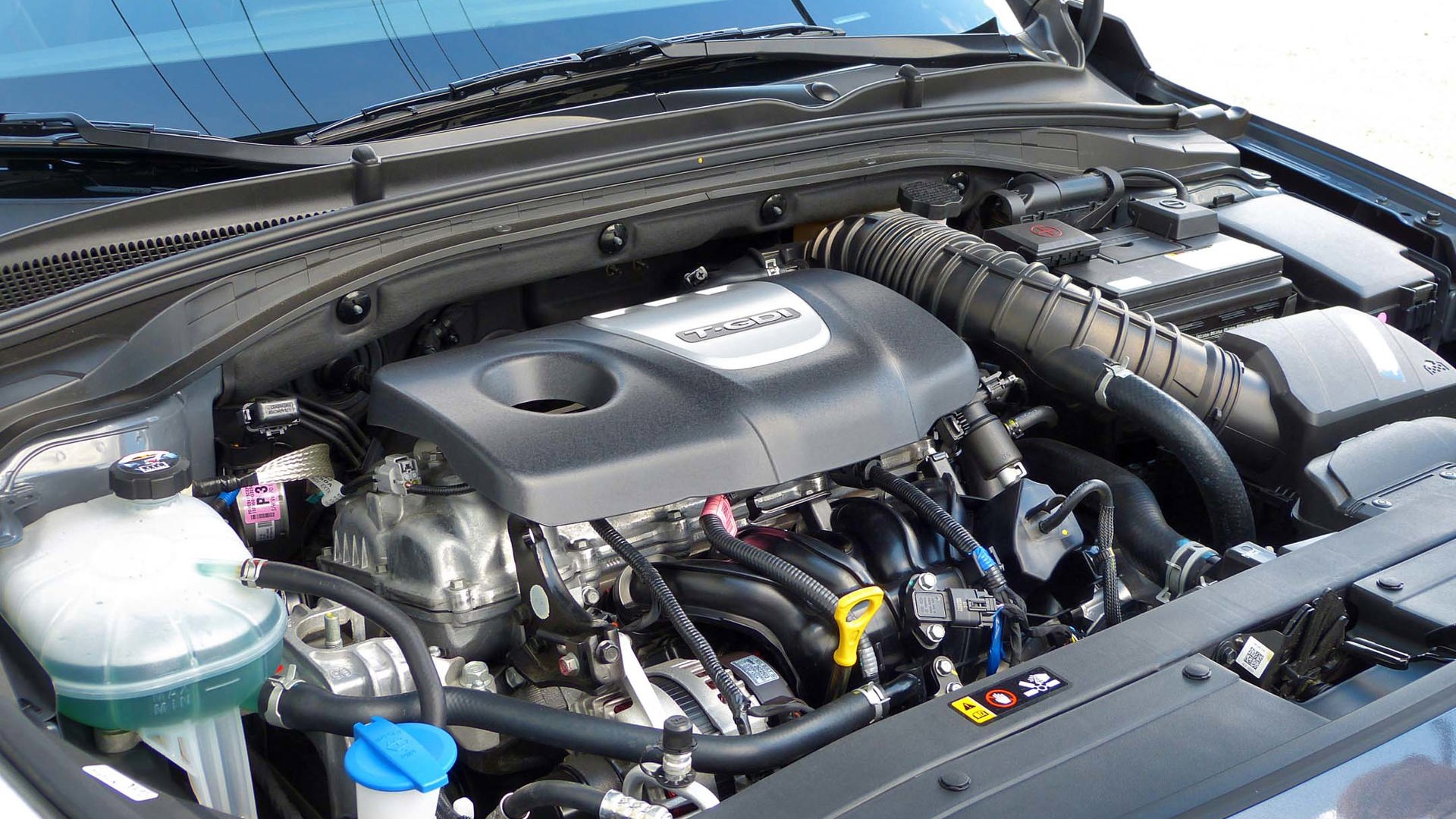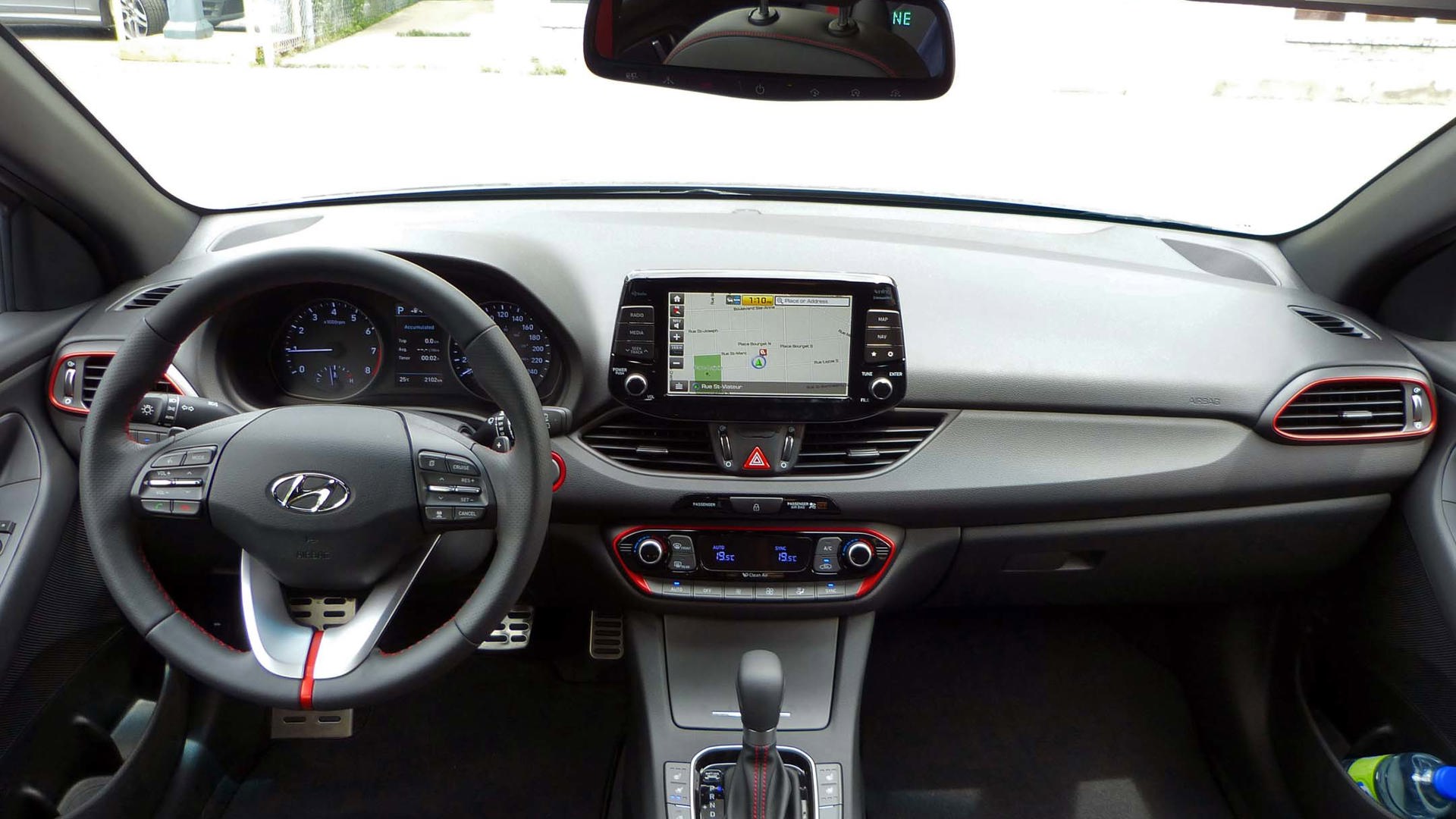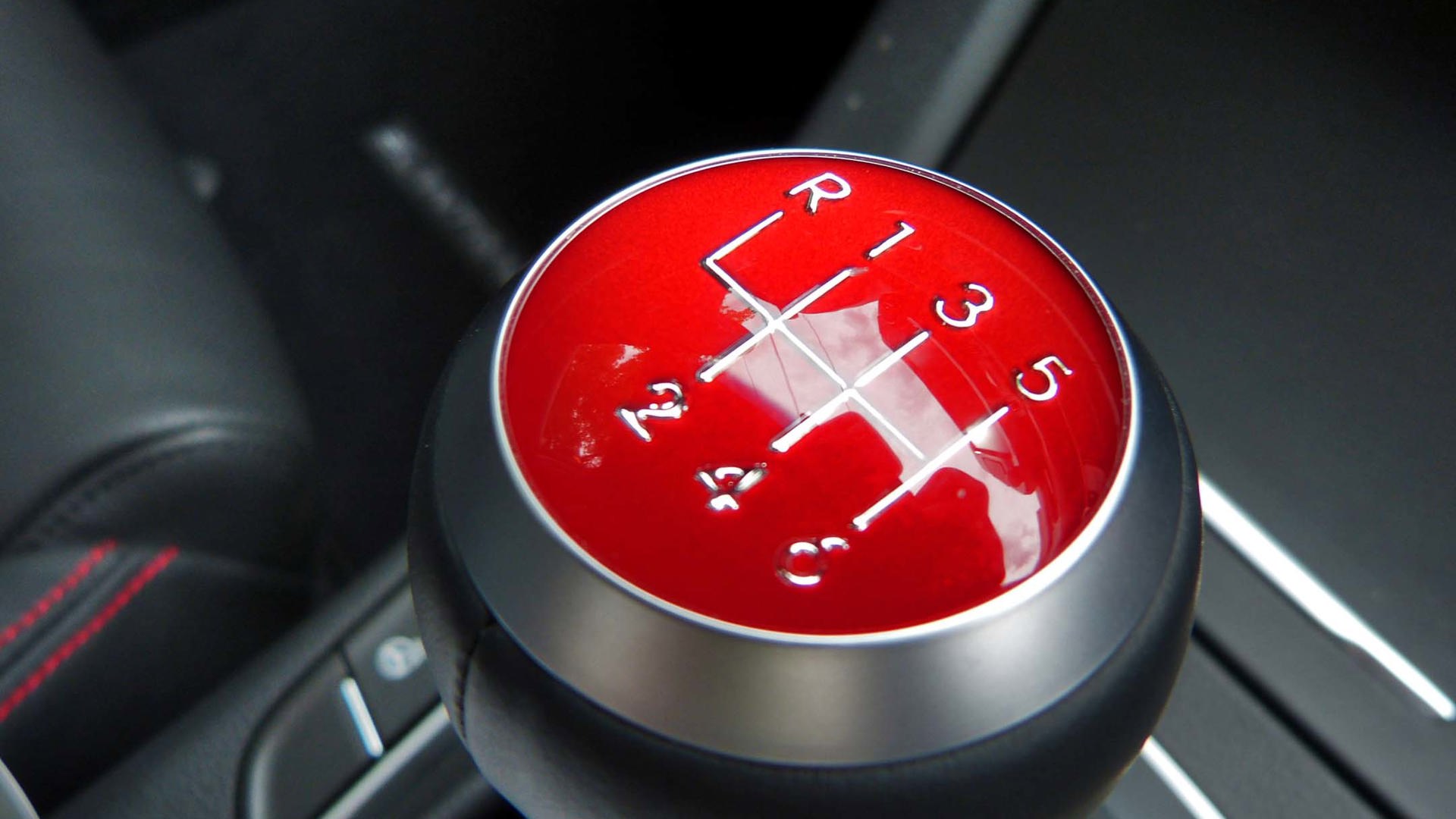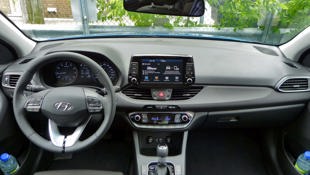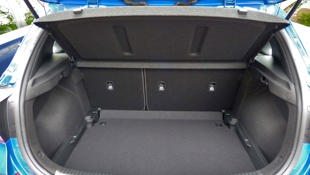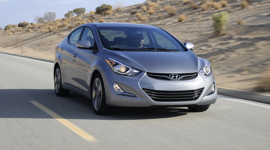The 2018 Hyundai Elantra GT is not a hatchback version of the Hyundai Elantra. Well, it is, but in nameplate and drivetrain alone. Otherwise, the Elantra and Elantra GT are utterly unrelated. They are built on different platforms, via different programs. They have different heights, length, tracks and wheelbases.
When it comes to raw, straight-up performance, the Elantra is a match for the 210 hp Volkswagen Golf GTI. And yes, I’m aware that sentence may see me running for the witness protection program.
The Elantra GT is a European Hyundai, badged and sold there as the I30. The Elantra is a North American sedan. Now we’ve been through the crash course on what the Elantra GT is not, let’s focus on what it is:
The Elantra GT Sport is a hot hatch.
I’ll wait for your rage to subside, but hear me out. The engine is a 1.6L turbo-charged four-cylinder with a slick six-speed transmission (plus an available dual-clutch transmission, or DCT), a sports exhaust and multi-link independent rear suspension. It is a sharp handler, managing road imperfections and cresting turns with confidence and joy.
With 201 hp at 6,000 rpm and 195 lb-ft of torque on tap from 1,650 to 4,000 rpm, the Sport models have a seriously grunty engine, which sounds tough and makes all the right noises out the back. It’s not as sexy a sound as the North America–developed Elantra Sport sedan – this one is more muted, but it’s nice nonetheless. This unit pulls hard and evenly, with just a little bit of intervention from the onboard nannies marring the manual experience. No matter though – you can turn those off.
The steering is precise and well weighted. A rear spoiler, functional air skirts, rear diffuser, twin exhausts plus the alloy pedals, red accents (including red seatbelts) will satisfy the boy racers among us. From the back, especially out on the road, the Elantra GT looks the hot-hatch goods. The 18-inch wheels set things off nicely.
DCT options (and automatic-equipped non-turbos) get a sport mode that tunes the steering weight, throttle response, and transmission for better performance; and an eco mode, which does not. With the button in the correct position (or in manual mode) and when it comes to raw, straight-up performance, the Elantra is a match for the 210 hp Volkswagen Golf GTI. And yes, I’m aware that sentence may see me running for the witness protection program.
Non-Turbo = Less Bueno
But that’s the Elantra GT Sport models. Like the sedan, they are a compelling value option and would be my choice in the Elantra lineup. Also like the sedan, non-turbo Elantras are a bit more of a compromise.
The independent rear suspension is gone in favour of a cheaper torsion-beam unit. The ubiquitous 2.0L GDI engine good for 162 hp at 6,200 rpm and 150 lb-ft at 4,700 is a solid little unit, but not the hot-rod of the upper trims. It delivers fuss-free, smooth and composed driving, but without the oomph and vivacity of the turbo.
And despite being less sporty, the non-turbo Elantra GT’s suspension is actually less compliant and less composed than the sharper handler. That difference was highlighted not only on a handling course, but also during our drive of some of Quebec’s most interesting and undulating winding roads. Ride comfort is better in the sportier-tuned GT than in the regular one.
Driving both back to back, I became even more convinced the turbo is the better buy.
Tip-Toeing Through the Trim Levels
Base model Elantra GTs will be tagged “GL” and get a strong list of standard equipment, including: four-wheel disc brakes, blind-spot detection with rear cross-traffic alert 16-inch alloy wheels, projector headlights LED daytime running lights (DRL), side-mirror turn indicator and remote keyless entry.
Inside the driver is pampered with heated front seats, heated leather steering wheel, 8.0-inch display with SiriusXM, a back-up camera with guide-lines and my personal favourite: Android Auto and Apple Car Play.
The tonneau cover is also standard – a nice touch.
The expected volume model is the GLS which adds 17-inch alloy wheels, proximity key with push-button start, panoramic sunroof and dual-zone automatic temperature control.
Moving to the higher-power units, the GT Sport will be the volume model – a fact Hyundai attributes to that car’s availability with a manual transmission and DCT. GT Sport Ultimate trims are DCT only.
The “base” GT Sport gets a 1.6L turbo four with a six-speed manual transmission, multilink independent rear suspension, 16-inch front disc brakes, 15-inch rear disc brakes, and an electronic parking brake with auto hold, 18-inch alloy wheels, full LED headlights and taillights.
Inside it gets alloy pedals and foot rest, leather seating surfaces power driver’s seat with lumbar support, a sliding armrest, red rear console ventilation ducts and a wireless charging pad. For your writer, this is the best Elantra GT to get.
The top-trim GT Sport Ultimate is expected to be priced in the low $30,000 bracket. It adds a suite of safety features to the GT Sport including forward collision warning with autonomous emergency braking, lane-keep assist and attention assist. Navigation and Blue Link are added and the sound system is upgraded to a seven-speaker Infinity premium audio unit.
Ventilated seats, an auto-dimming rear-view mirror with HomeLink and compass and a 4.2-inch TFT nestled in the instrument cluster round out the top-trim offering.
Blue Link is Hyundai’s answer to OnStar – and it’s a compelling proposition. It’s free for five years, with full service, which means it will run for the duration of most lease periods and finance periods. After that, there will be an as-yet-undetermined subscription fee. Blue Link offers remote starting, remote control of the air conditioning and heating systems and a vehicle locator, as well as vehicle diagnostics. It operates via an in-car modem that is synced to your smartphone.
Poring Over the Practical Stuff
A two-stage floor allows the Elantra GT to maximise cargo volume when needed, and also allows for a nearly flat floor when your trip to Ikea is more ambitious. The seats don’t lie totally flat, and the floor trim seems to intrude on the space a little, but it’s usable for most needs.
The volume isn’t bad: 705 L with the seats up, 1,560 with them down.
Rear legroom is more than sufficient for me at 5'6" to sit behind myself. If your driver likes using the narrow centre armrest, the passenger and driver will touch a little – but I’m okay with that; I like affection. On the plus side, that armrest/console cover slides forward and back. Otherwise, it’s roomy, the seats are decent, if not wonderful. I’d have liked more bolstering because skids.
Headroom is generous, and the panoramic sunroof is gorgeous. The available charging pad console box is a welcome addition in the Sport models, but at-hand storage is good regardless.
The door lock button is in the Euro-spec centre-dash position, which is annoying and frustrating, but only the first time you look for it.
Other Random Gibberish They Put in the Presentation
The Elantra GT only came to North America at the insistence of Canadians. Maple-leaf-munching folk marched on the US and demanded their American counterparts at least try the thing out. They did, they liked it, it came to North America. We should use those Hyundai Canada execs to renegotiate NAFTA.
Other small tweaks to the frame have increased stiffness and strength, while also aiding costs. For example, the five-piece door frame of the old Elantra GT has been replaced by a one-piece unit. Fewer parts, more strength.
Because this is a European-derived Korean car, Hyundai refers to this as #EuropeanKimchi.
Looking Good
Eight exterior colours are available in shades of grey/silver, blue, red and a striking orange. The interior is more conservative. Sport models get black with red stitching, non-turbo models are black inside, with an available two-tone grey/black interior. It I’m honest, I’d like more of a lighter colour palette available similar to Mazda’s offerings.
The rear end of the car is particularly good-looking; while the downward sweep of the bonnet has given it a slightly awkward profile. The strong, sculpted character line down the side connects the headlights to the taillights effectively, giving the car a pleasingly cohesive appearance.
Infotainment
With a massive eight-inch touchscreen across all trims, complete with redundant hard buttons and knobs for tuning, the Hyundai system is one of the best. The ability to pre-record your 10 favourite SiriusXM stations is spectacular, and the controls are all intuitive and easy to use.
The newest feather in Hyundai’s infotainment cap is a revised centre stack which mounts the screen up high without making the dash too high. The result is a screen you can check quickly, without ever losing sight of the road ahead. It’s mounted right in the driver’s eyeline – something that is a definitive bonus of the aesthetically compromised “high-mount” screens sometimes criticized by consumers. Hyundai has seen off that “stuck-on iPad” issue too, by applying their hard buttons down the side and subtly sculpting the screen to give it a more natural cohesion with the dashboard.
Summing Up
The Elantra GT is a well-executed hatch, with trims that will satisfy the full gamut of shoppers in this still-vital segment. If manufacturers keep turning in efforts like this one, perhaps hatchbacks will stave off the onslaught of compact and subcompact SUVs that threaten their existence. Especially if shoppers try out the brilliant Elantra GT Sport variants.
PS: 201 hp and independent rear suspension still makes this a hot hatch.









